March 27, 2022
Martha O'Kennon
Well, remember last week when I was positively incandescent about the arrival of Spring? Everything seemed to be sprouting, blooming, and best of all, some of my favorite creatures suddenly appeared on the Wall of Fame. Guess what? This is Michigan (supply your own state). Almost as the ink dried on last week's blog, the temperature dropped (well, back into the 30's and 40's). Much too cool to have started feeding the fishes! Here you see the light snowfall I saw out the bathroom window - the temperature at 41 F. (Sunday: the temp was in the 20's when I got up! The pond was once more frozen over lightly so I tossed the heater back onto it. The weather predictions for the next week and a half aren't very encouraging either. But cross your fingers.)
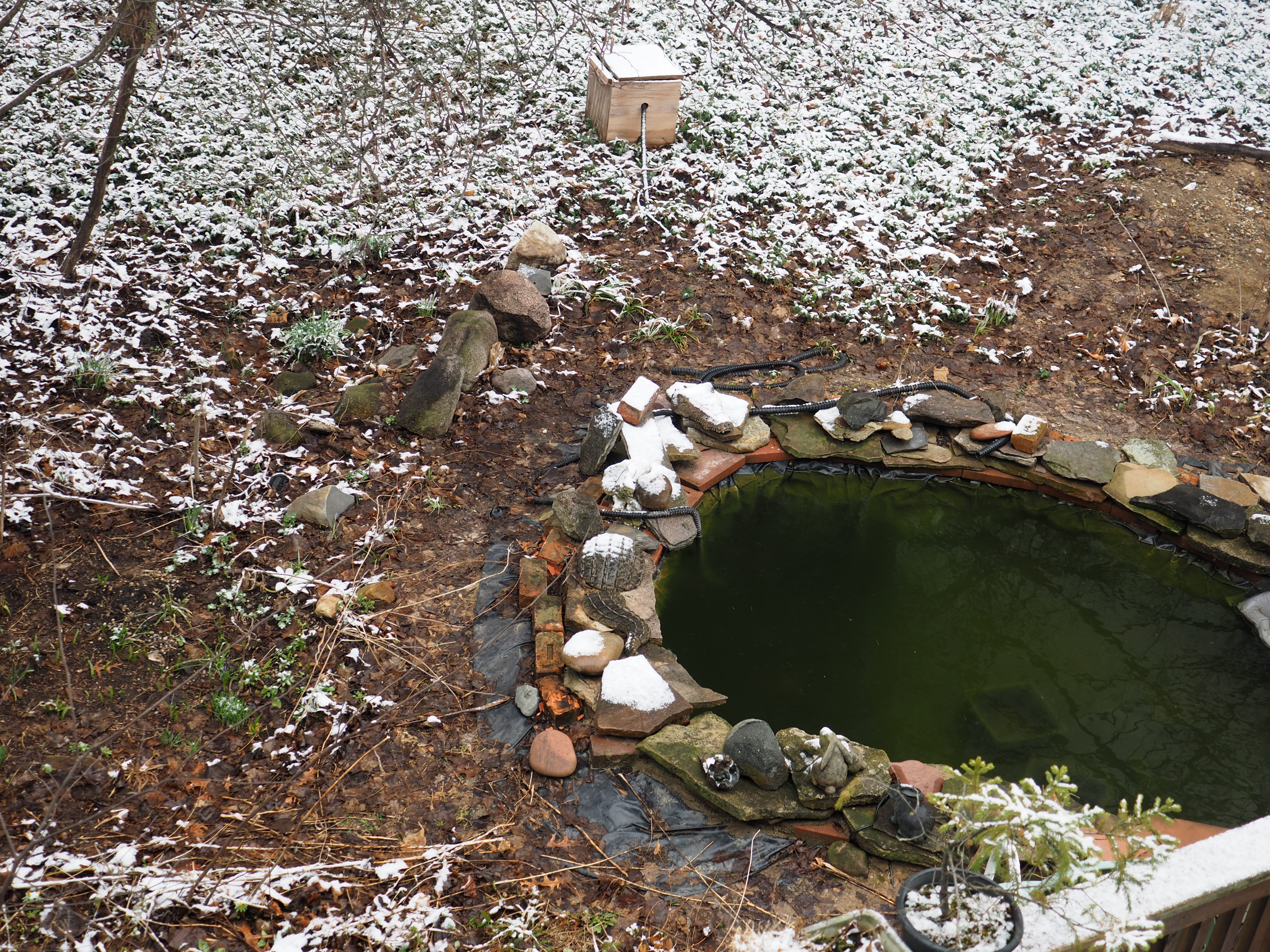
These lovely Woodland Crocuses bloom in amazing clumps, the earliest crocuses I have. They are being joined by others, like these royally purple ones and this fragile-looking cluster of deep purple spikes.
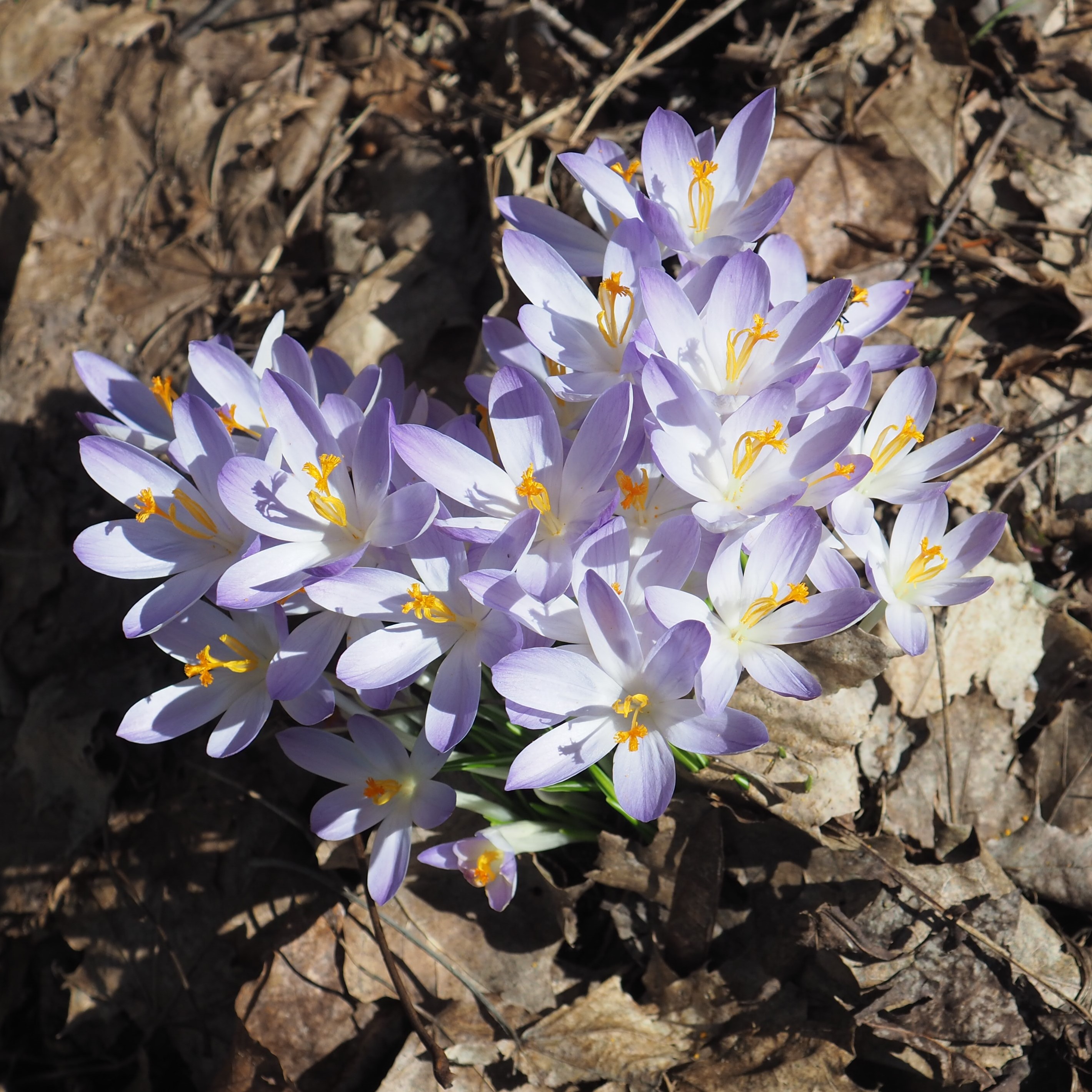
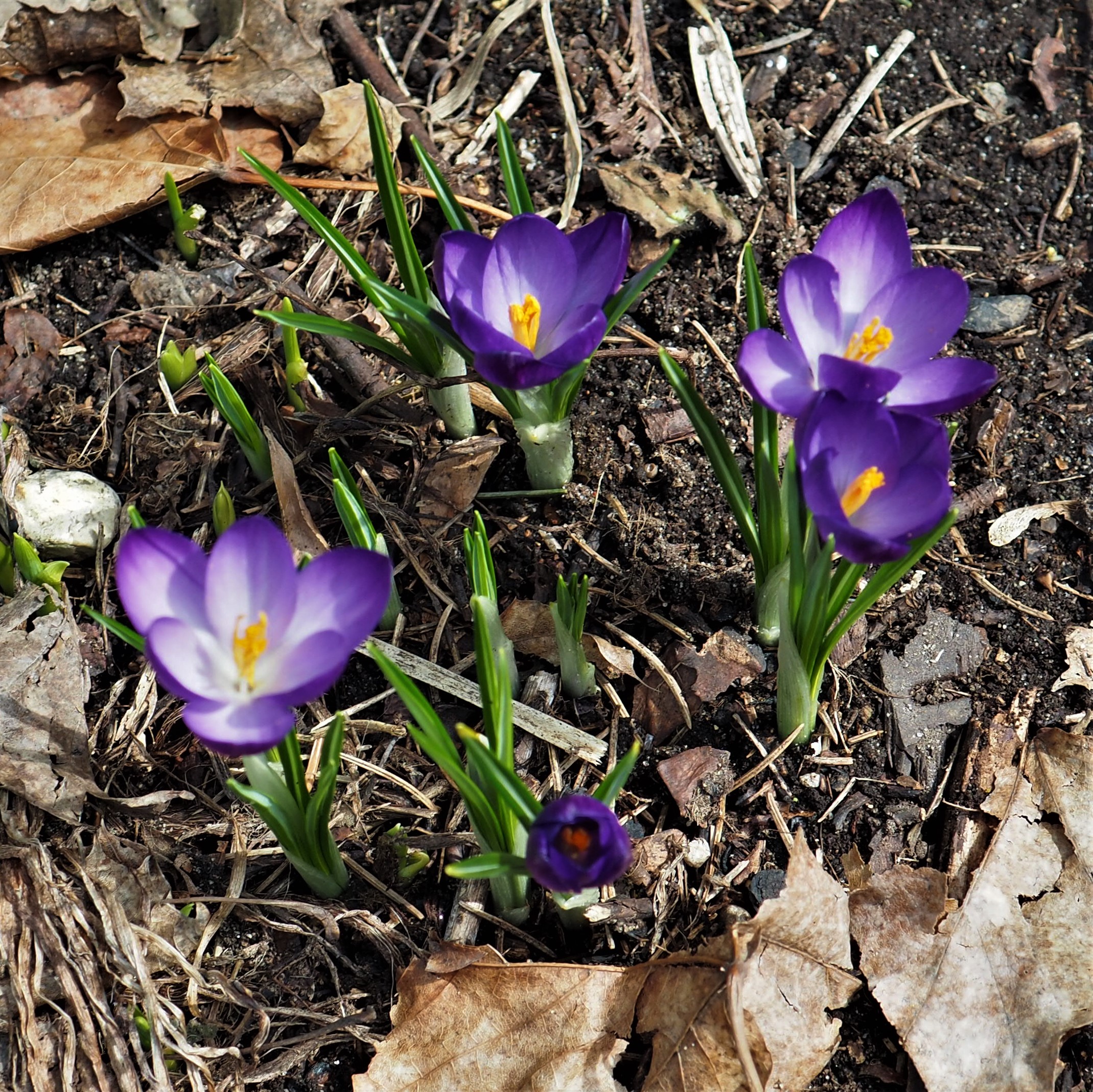
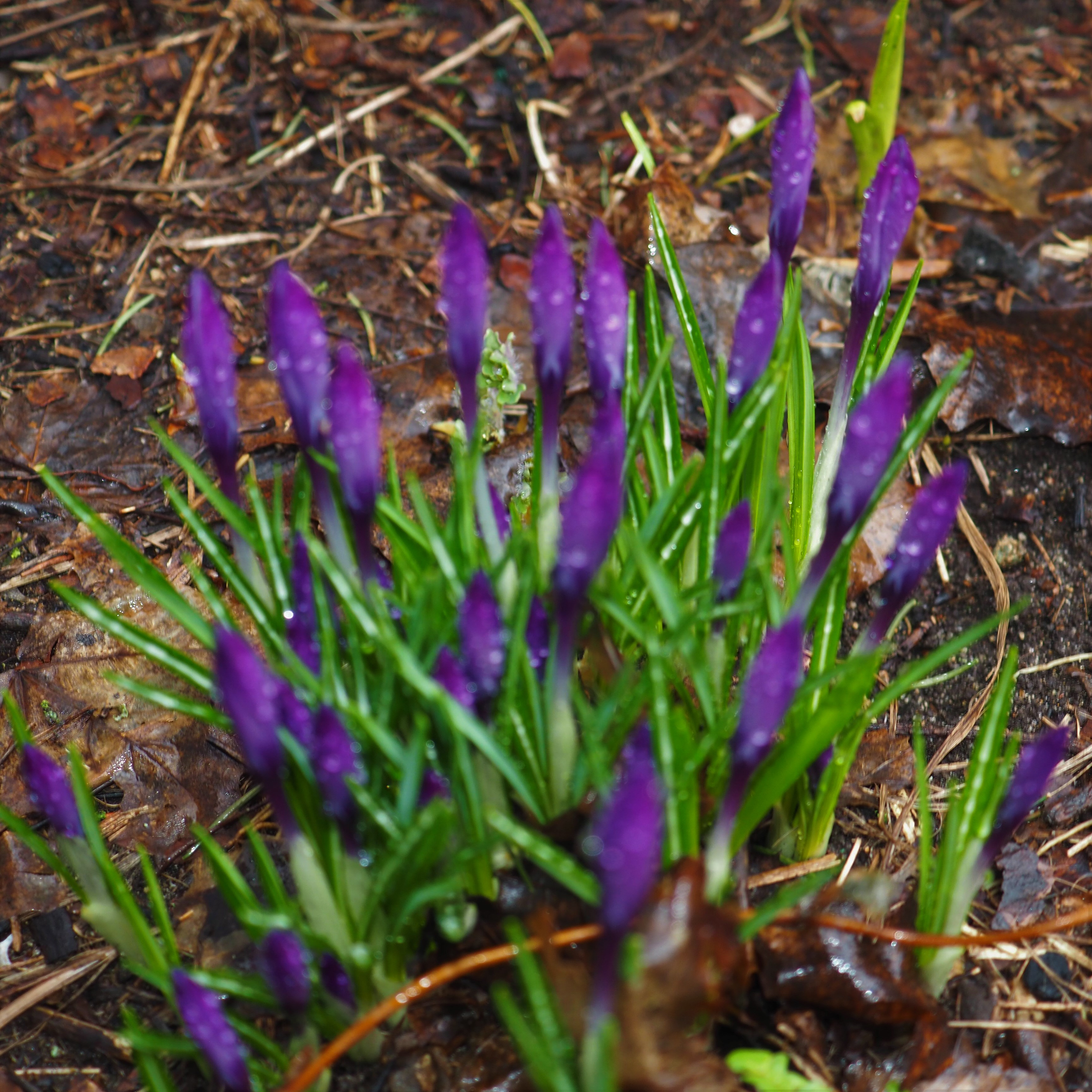
Last week the Winter Ants appeared - to welcome Spring, I guess. On the day after we saw that usually black one, this sight greeted me - the lightest pinkish-orange one I ever saw (two shots). In a conversation with Emmett Collins-Sussman, an Ant enthusiast, if I understood correctly, this might be a "replete", a worker ant who acts as a food storage device. Apparently not all species of ants HAVE repletes. I wonder if the ants who keep Aphids as repositories for "honeydew" don't need repletes. He also said that the repletes of most species are so grossly full of liquefied [plant or animal] substances that they don't wander afield, but that the repletes of our Winter Ants (Prenolepis imparis) don't get so uncomfortably full and so are able to leave the nest and do some foraging.
Collins-Sussman's original: "Repletes are the "living food storage" workers, with their gasters swollen full of stored food. Honeypot ants like Myrmecocystus are the most famous example, but there are several others, including P. imparis, that have repletes. In most species, the repletes never leave the nest, but P. imparis repletes don't swell to the extreme that others do and are therefore still mobile enough to do some foraging work themselves." (By the way, we don't have Honeypot Ants on this hemisphere according to the map in iNat.)
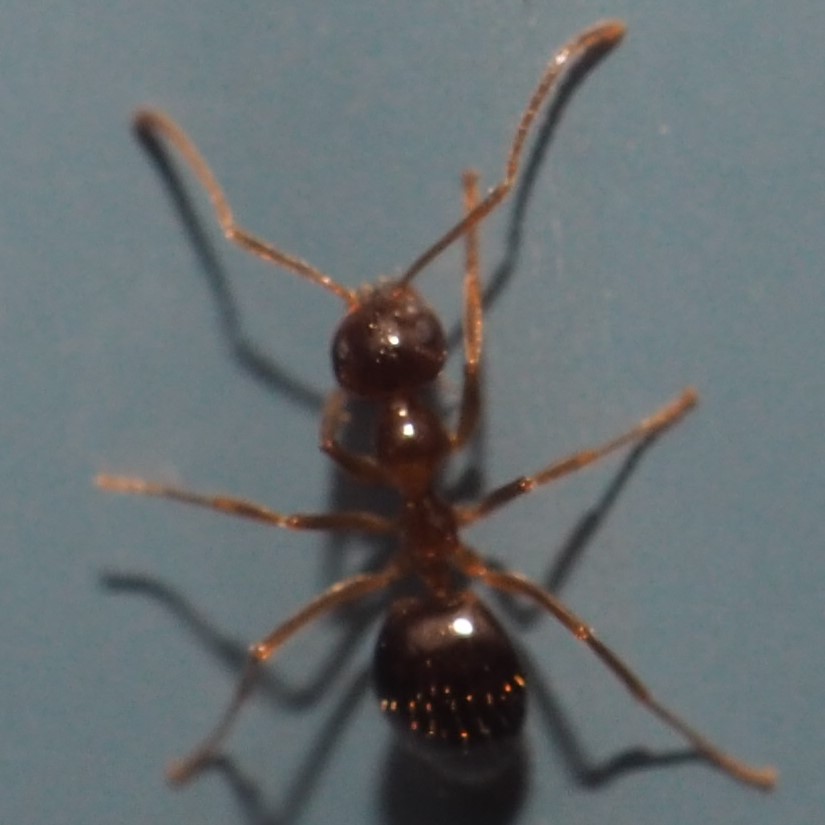
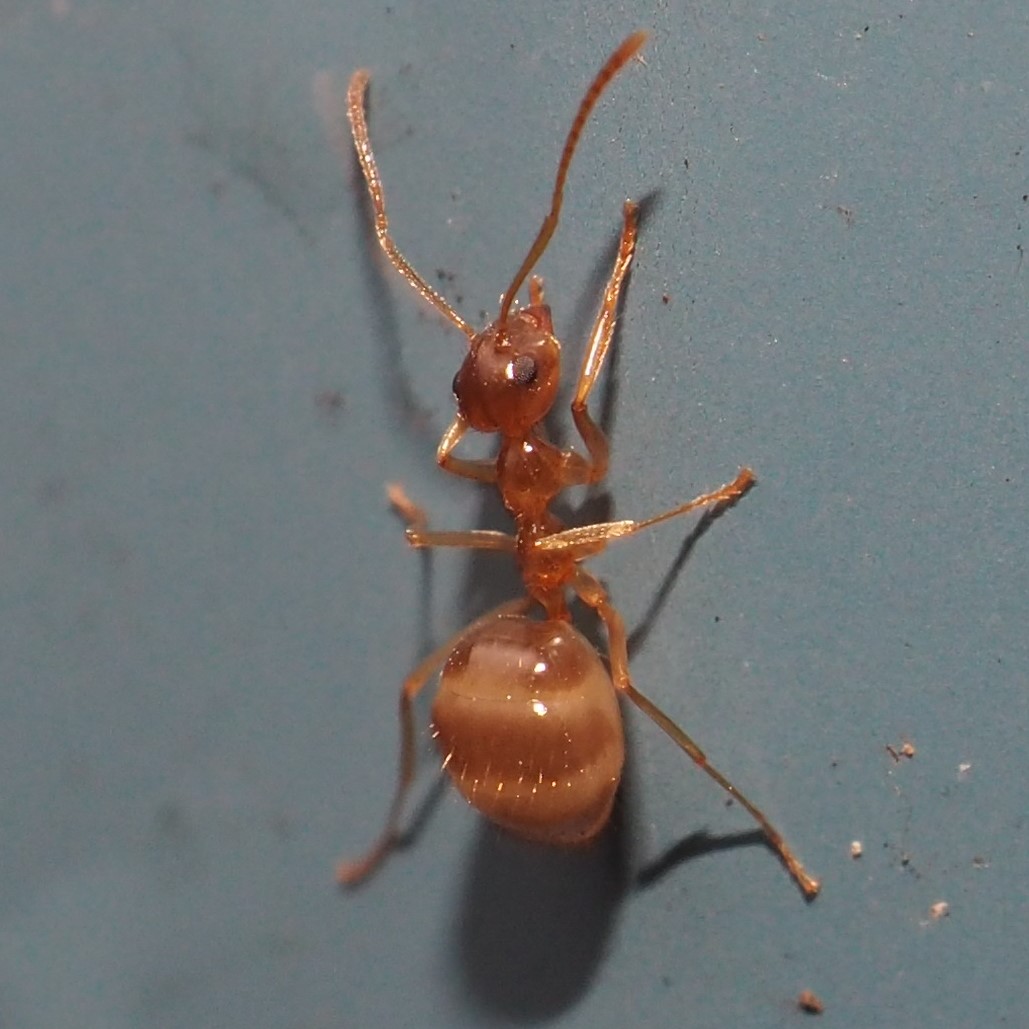

The brown straw-ish structure (likely an egg mass) that I've been studying since October has undergone quite a lot of degradation since then. This week the long vertical part below the roughly square main part fell victim to the RAIN. Amazing - to get through the hostile winter to succumb to the rains of March. But the rest seems all right. Picture 1 shows the whole structure including far below the main mass a couple of possible hatchees(?), as it was on March 21. Picture 2 shows the situation on March 24..
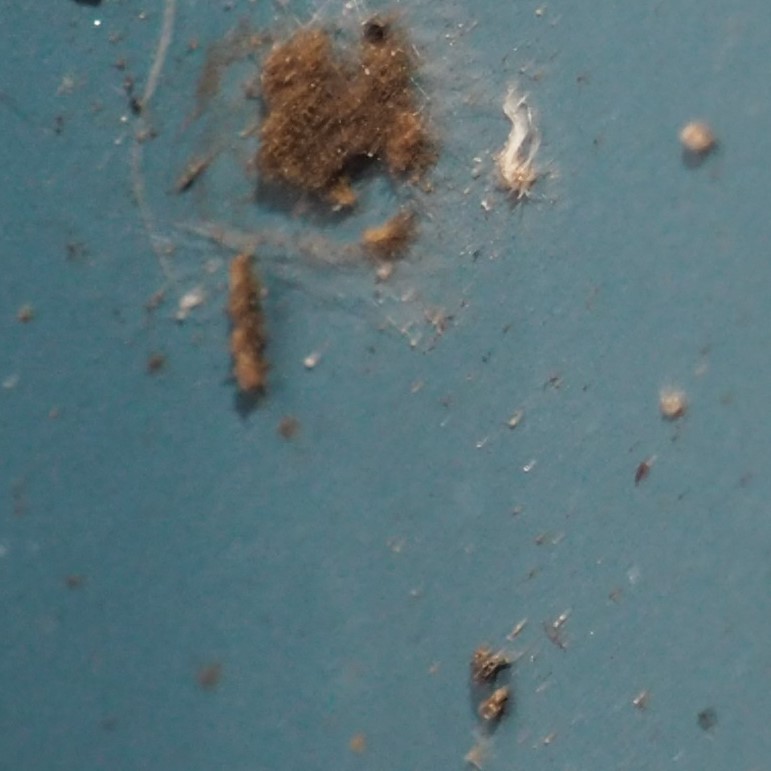
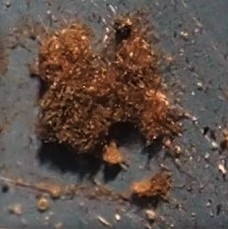
Another massing of Barklouse eggs is this one that seemed on March 15 to be breaking up. Pictures 2 and 3 show the configuration on March 21, and then on March 23. In the latter, you can make out what looks like a very small nymph in the upper right.

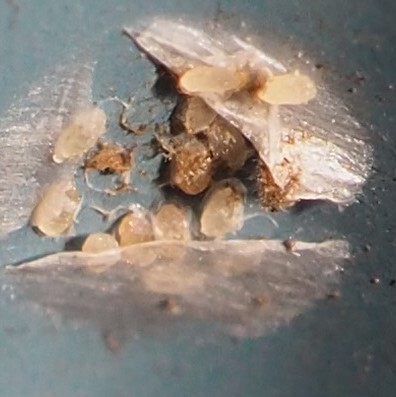
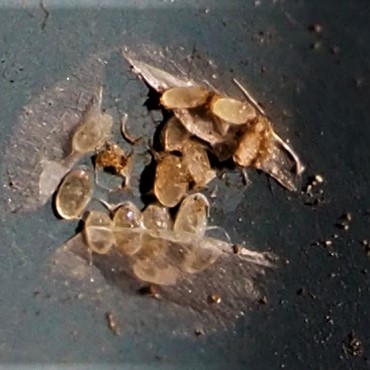
March 25, 26 and 27.
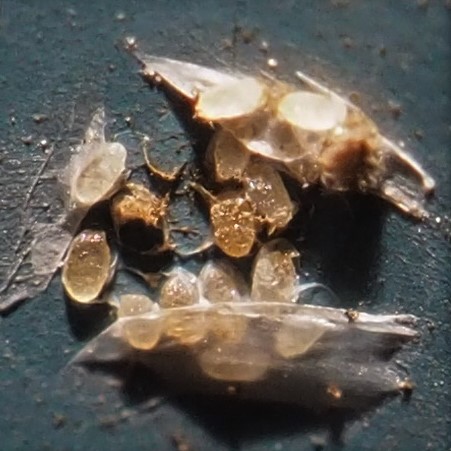
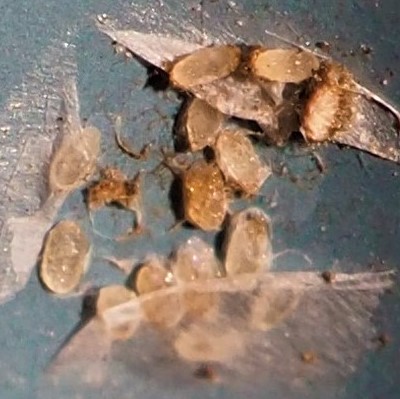
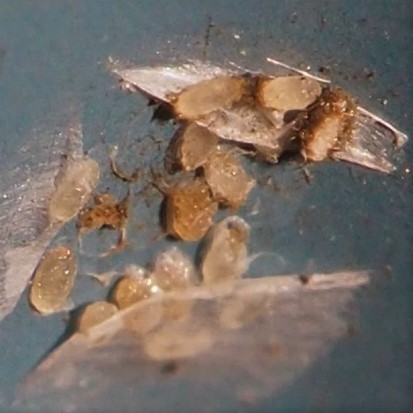
There are still a good number of Barklouse egg nests. Most of them are covered in fine webbing which keeps the inhabitants warm and maybe hydrated. In the second one here, the eggs are still whitish.
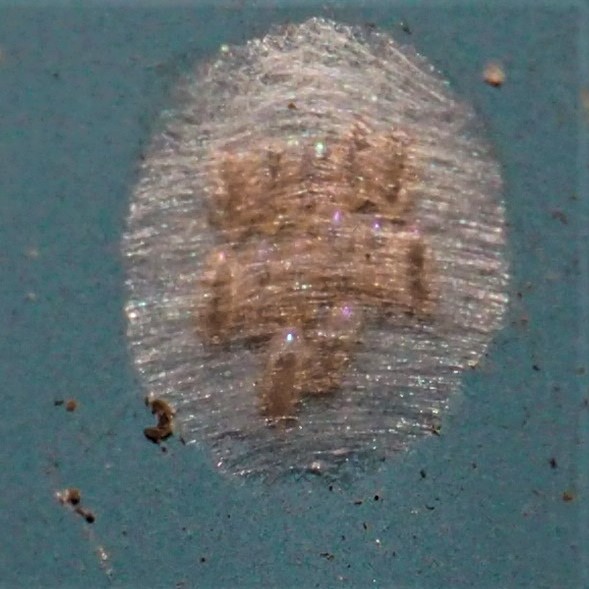
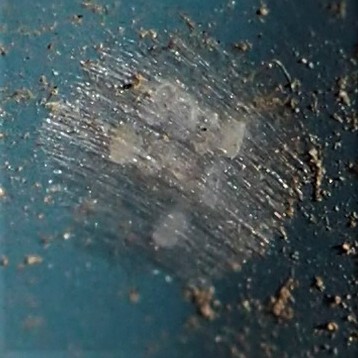
Some of the egg masses are covered with a clay-like substance. This first one is on the South Wall, on the left-most panel. Second was also found on the South Wall, as was number 3. The last picture shows the egg case partially hatched, where the nymphs seem to exit through the holes on the circumference of the case.
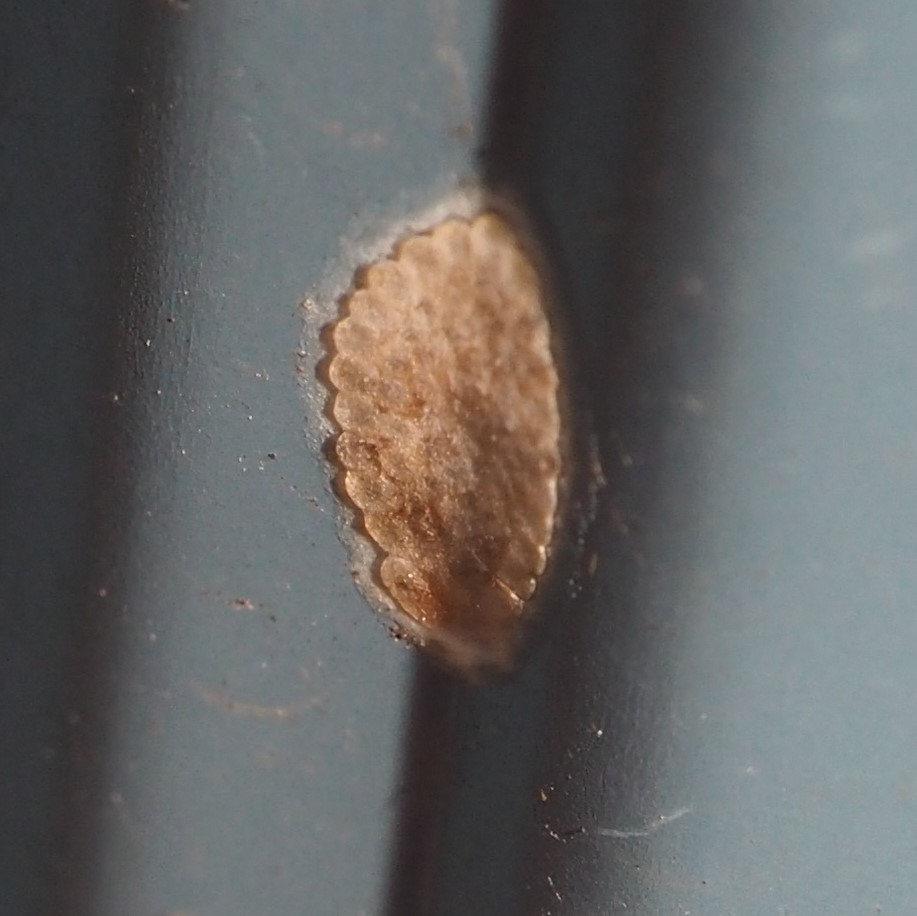
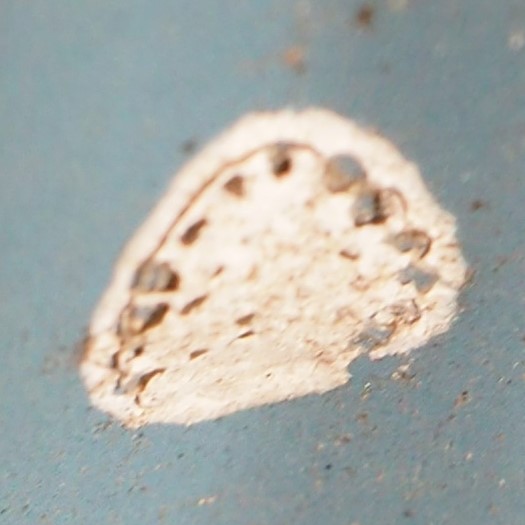
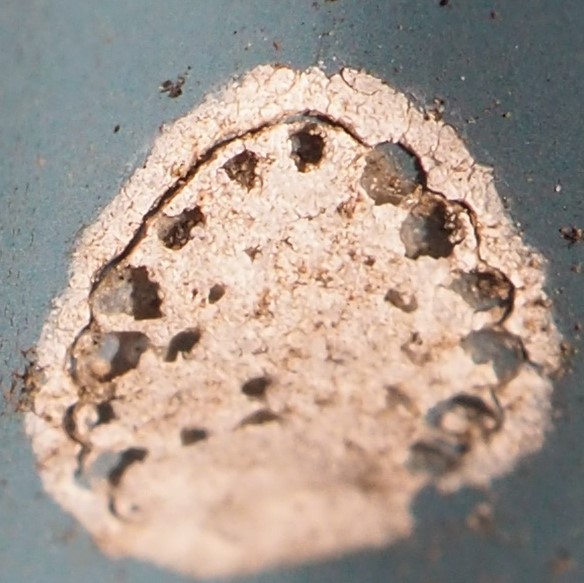
Here is one that I thought might be a leafhopper when I started analyzing it, but now it seems to have quite a lot of little creatures (?) crawling at the edges. Another Barklouse nursery???
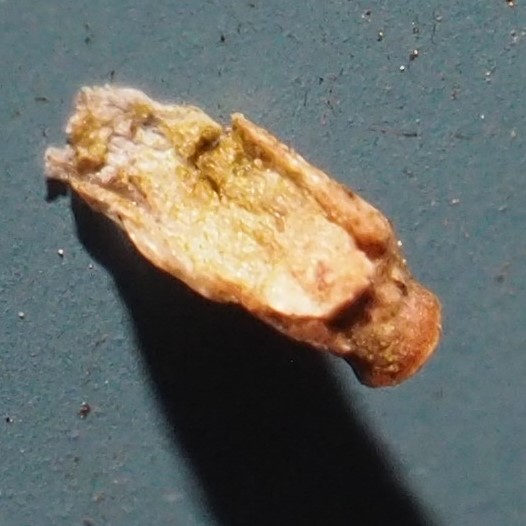
Last week we found this Beetle (Omosita discoidea) on the South Wall. I'd seen it several times in years past.. Then a few days later number 2 showed up. Usually Bugguide.net gives the sex when it is known, but I found one matching picture 1 and another matching picture 2, both given as O. discoidea. I'm making a guess that the second one is the male and the first the female. (In the bug world, it is often the case that the female is larger. In this case, the one on the left is actually longer and I would have called it Ms. Omosita or even Dr. Omosita.)
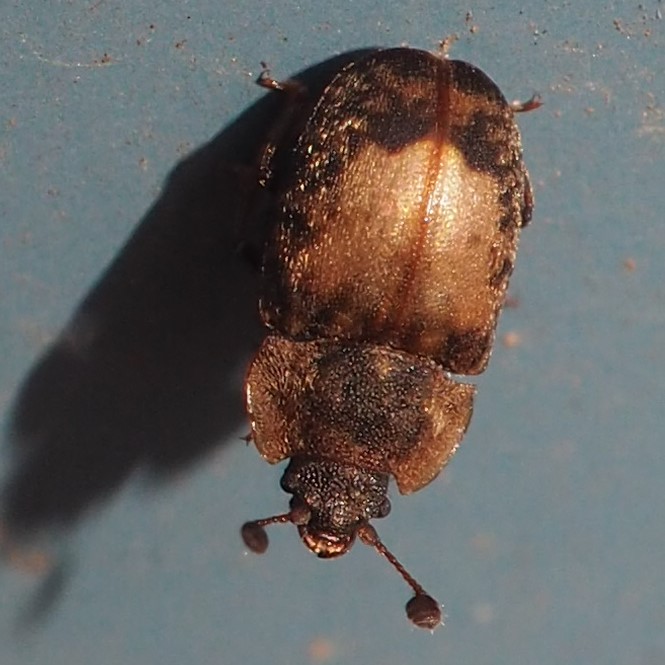

Another Beetle that I found in my collection of observations in iNat is this orangish one, which Boris
Büche identified then and now as belonging to genus Ptinus. This is a largish genus of Beetles, most of which don't have photos associated with them in iNat. I had seen it a couple of years ago and had made the guess that it was the White-marked Spider-Beetle (Ptinus fur). But no positive ID.

Moving on to Bugs, at last - the Leafhoppers are very slowly beginning to re-emerge. Kyle Kittelberger says that they overwinter as adults, mostly under leaf litter. Anyway! First is genus Balclutha; second is one of the Eratoneura; and last is an Erythridula, similar to one we saw last week.
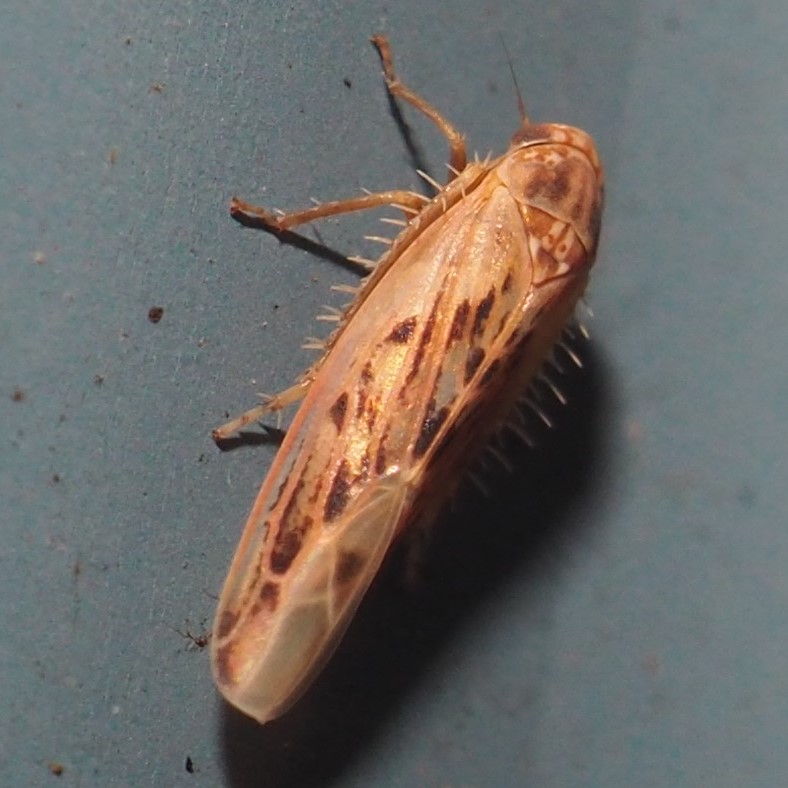
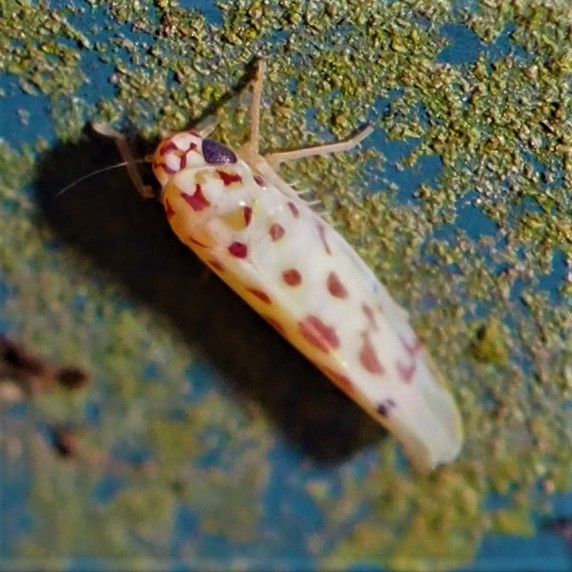
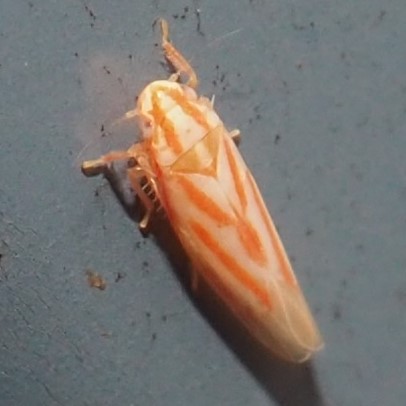
Let's leap to the Flies. The winner in the sheer number category is Midges, mostly non-biting, and many with a nasty little red Mite attached to their necks. Number 2 is a Midge too, probably somewhere between a Gall Midge and a Forest Midge. It also has caught the Mite. Number 3 is just plain I don't know!
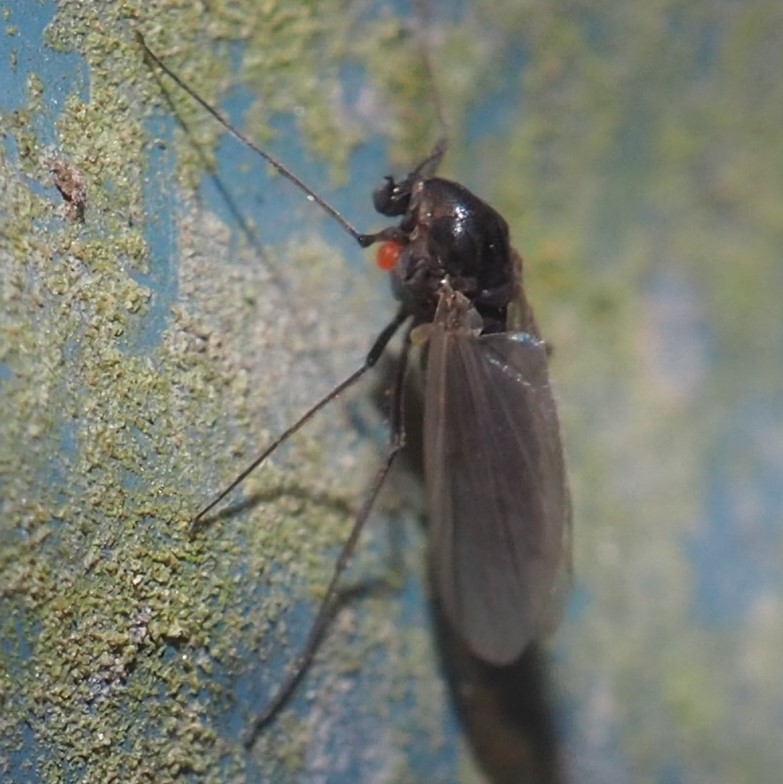

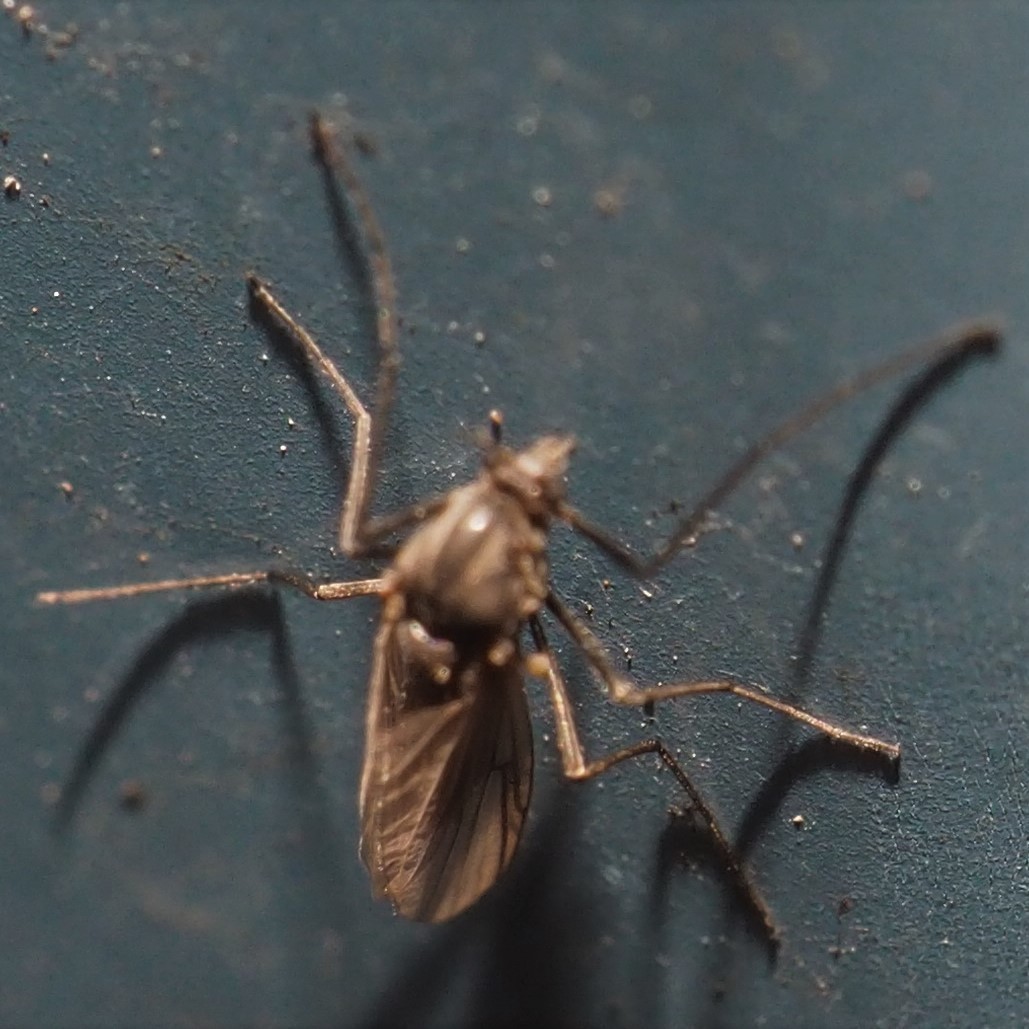
Here is a Root-Maggot Fly. Then comes our FIRST Mosquito of the Spring. Liam Wolff says it is one of the Anopheles genus, the Malaria Mosquitoes. The third is a little Muscoid Fly.
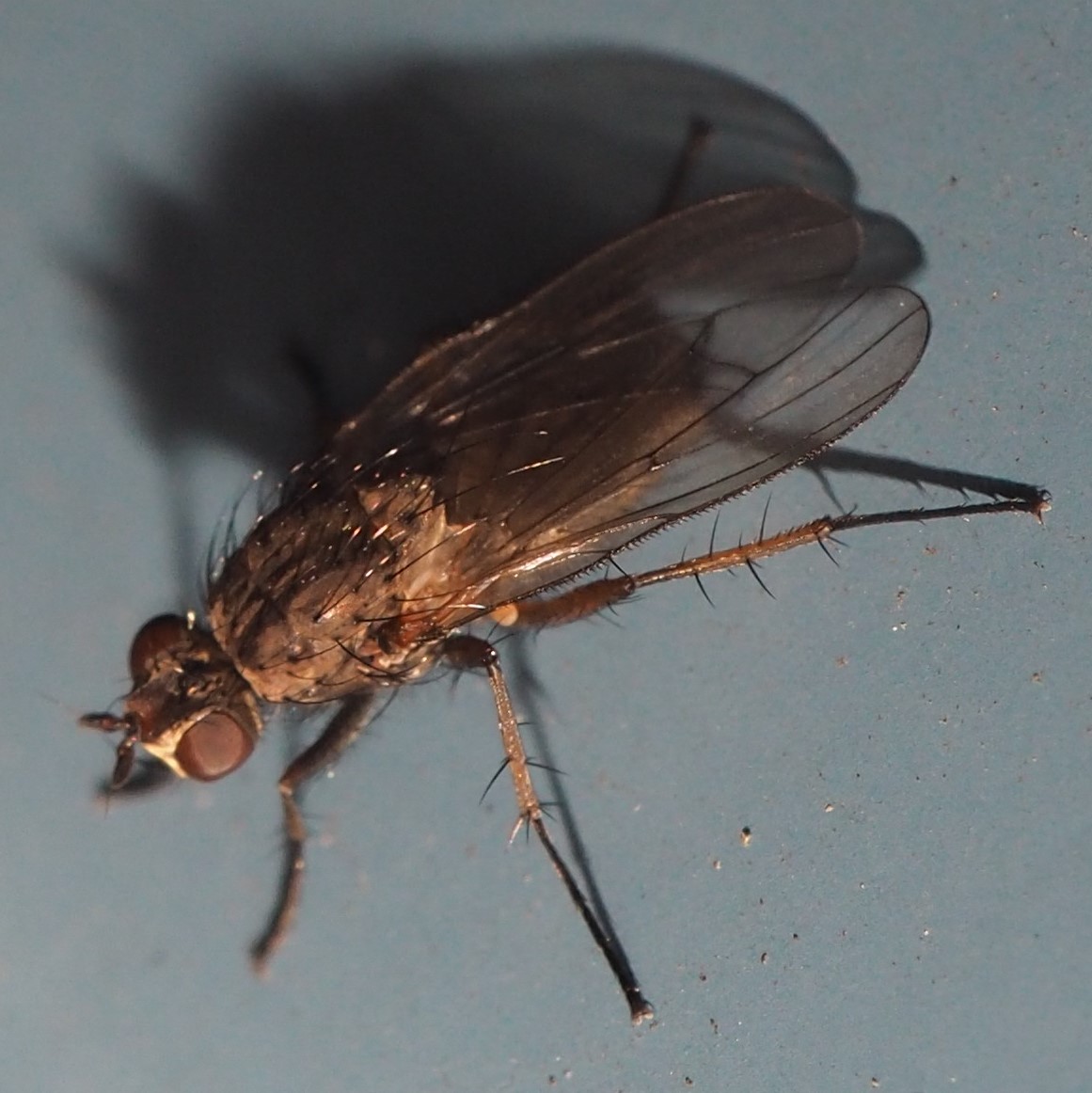
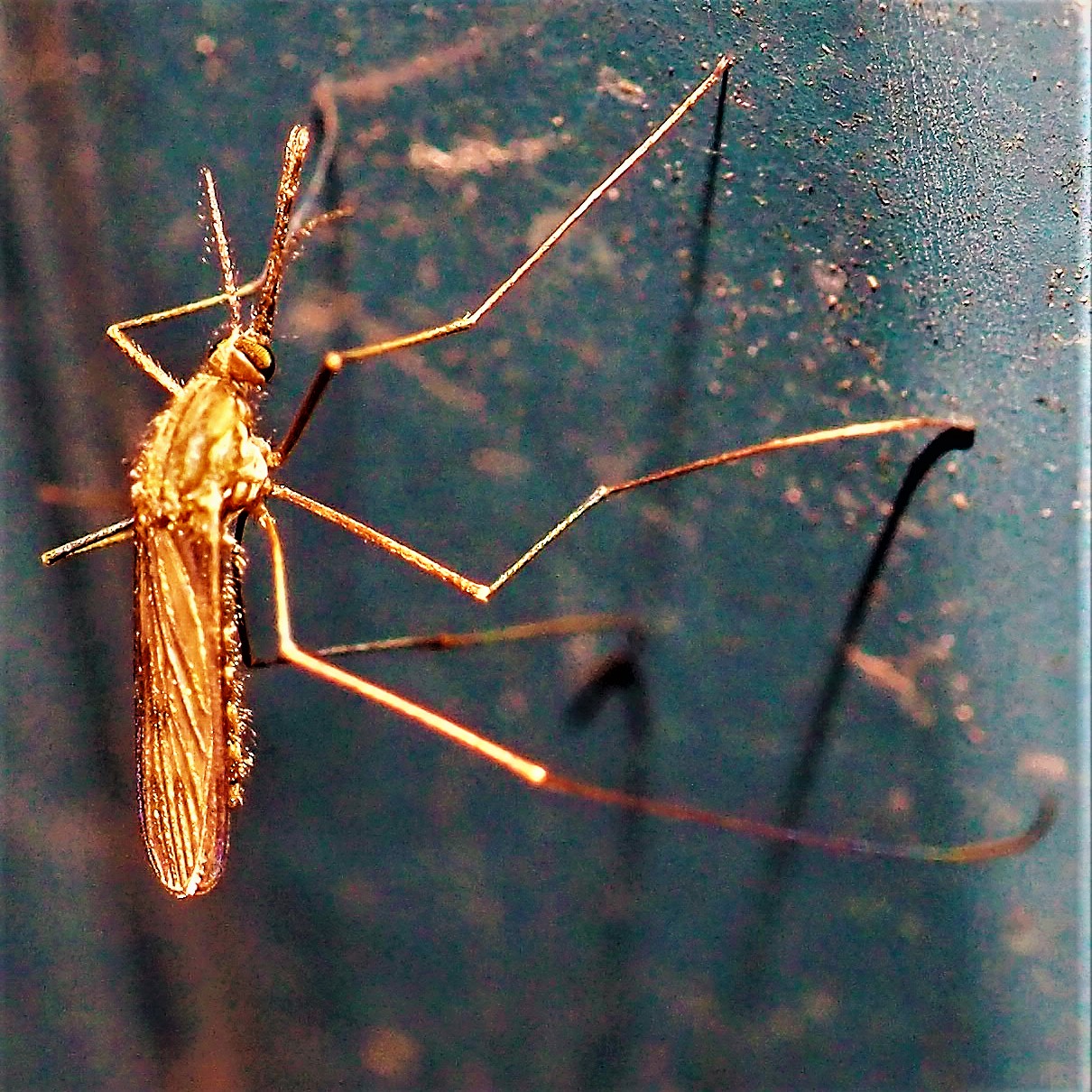
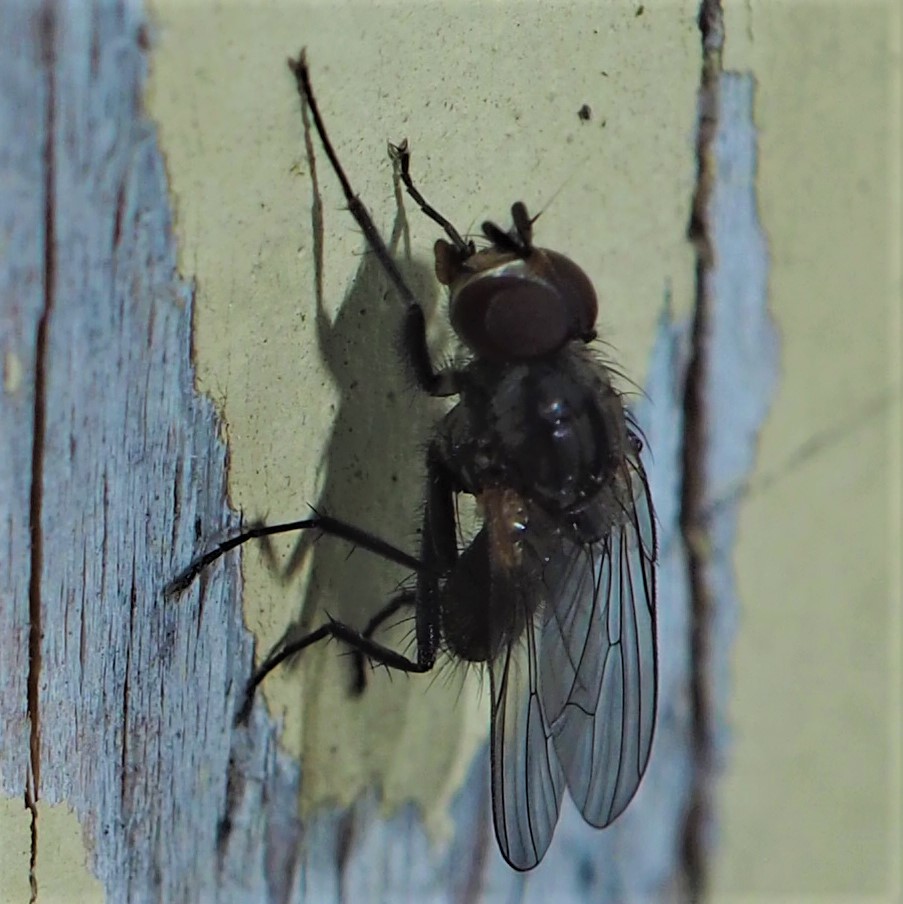
The little Loopers are all over the Wall (all four sides) now. They are so cute!
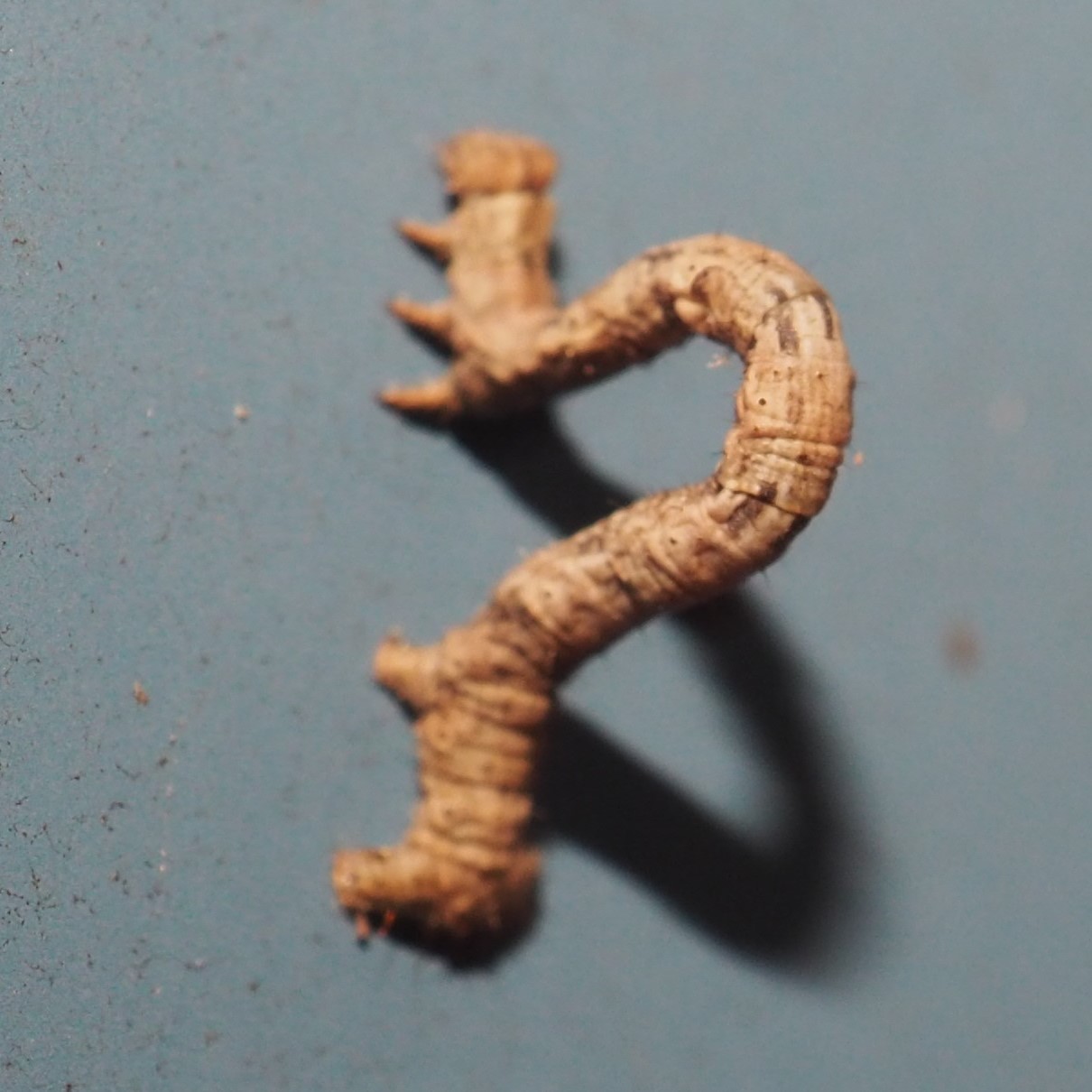

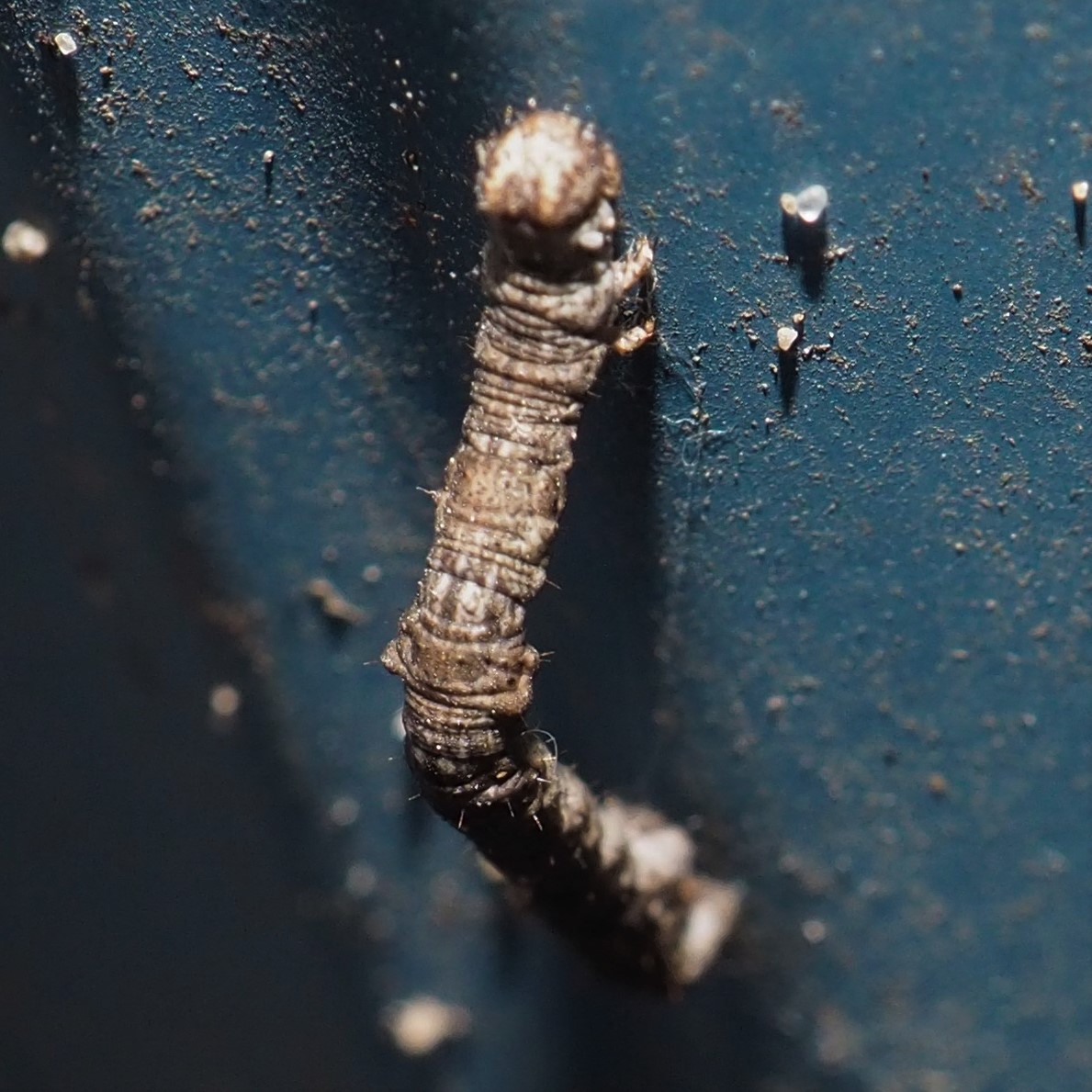
Let's take a little look around the seasonal flowers, and their progress toward what we associate with Spring! Here are a couple of Hyacinths in the back yard. Third is a patch of Winter Aconites, their flowers drawn together waiting for the relative warmth to come back.
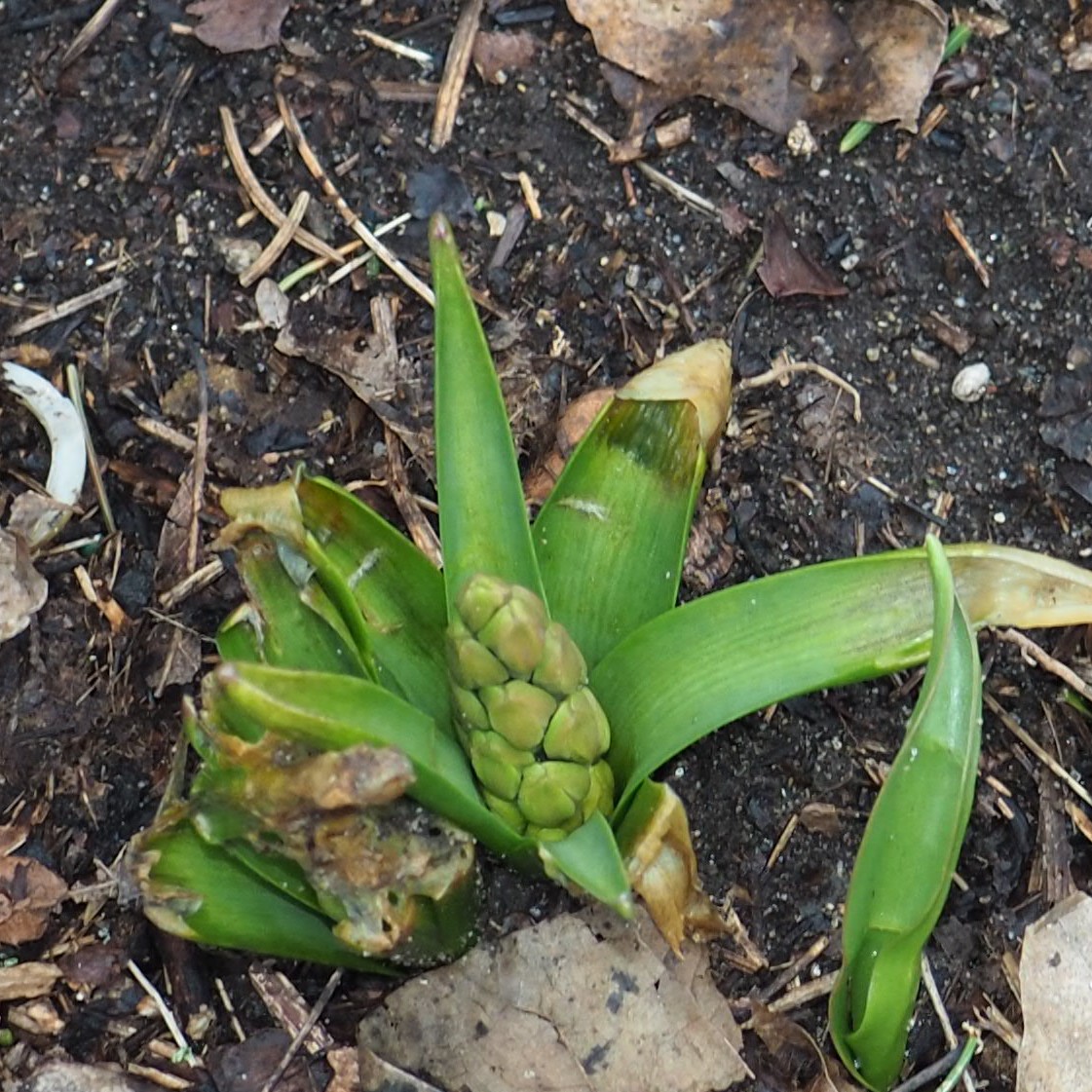
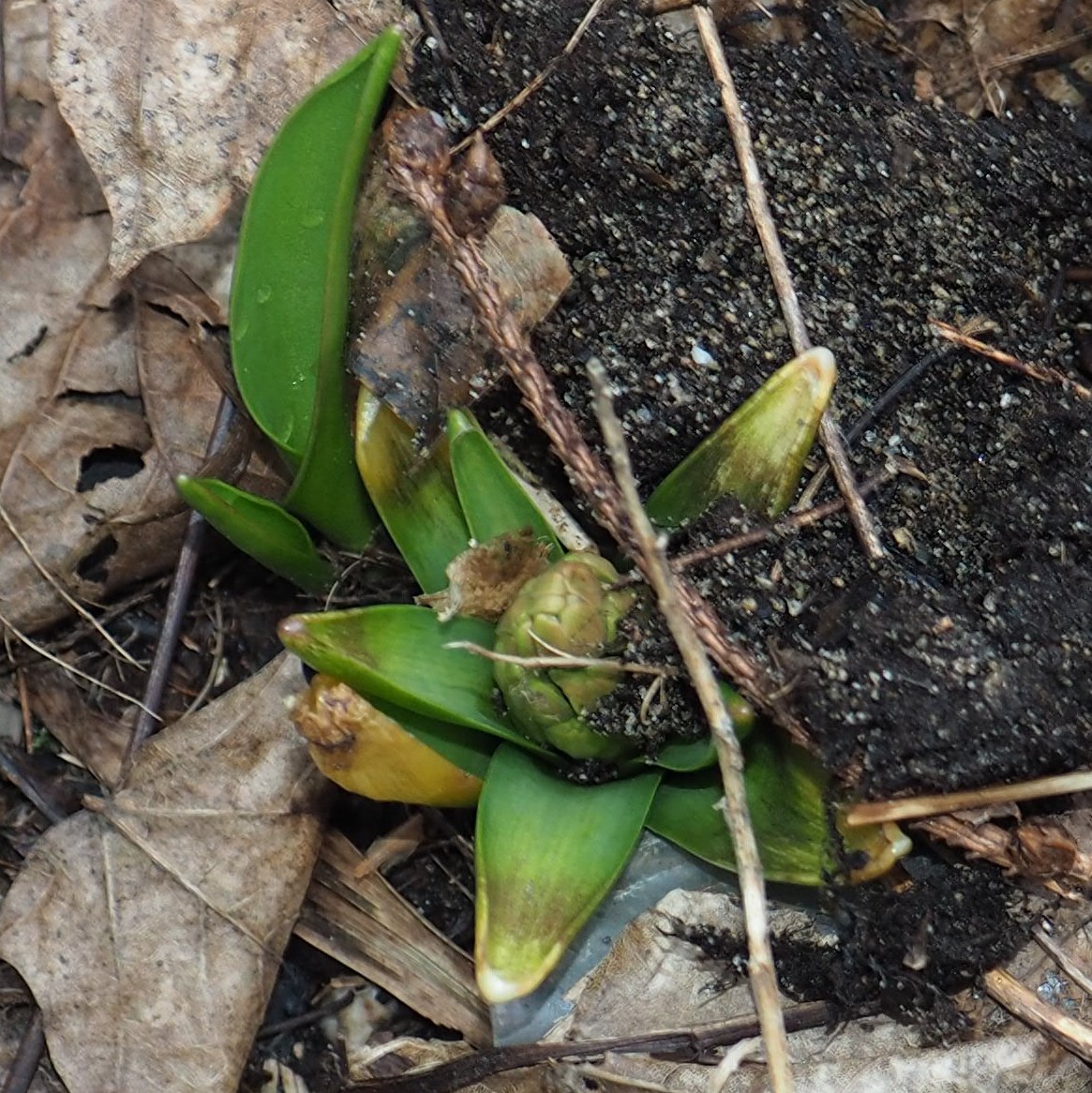
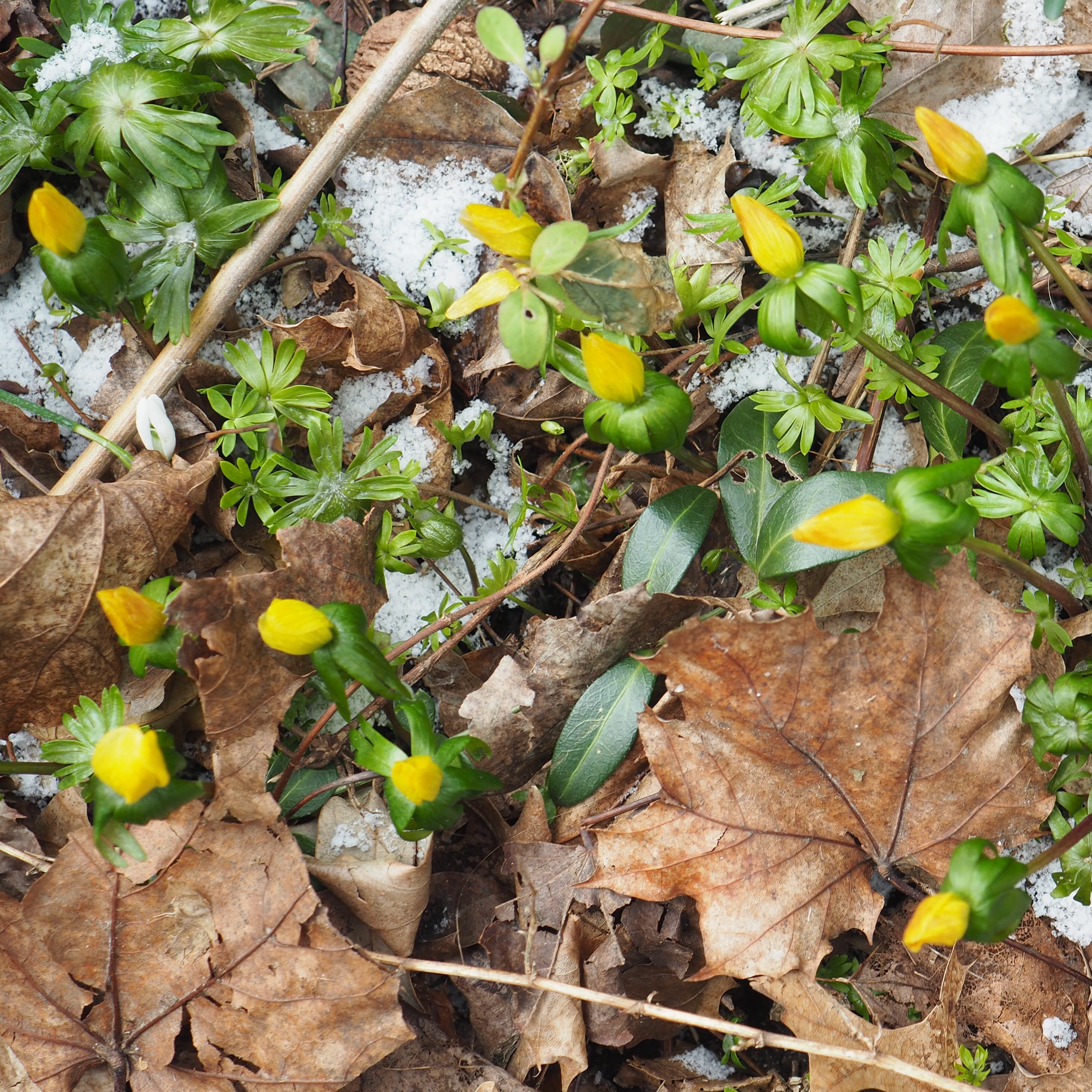
Here is an Iris growing up in the Back Yard. And a view of the Irises from across the Pond.
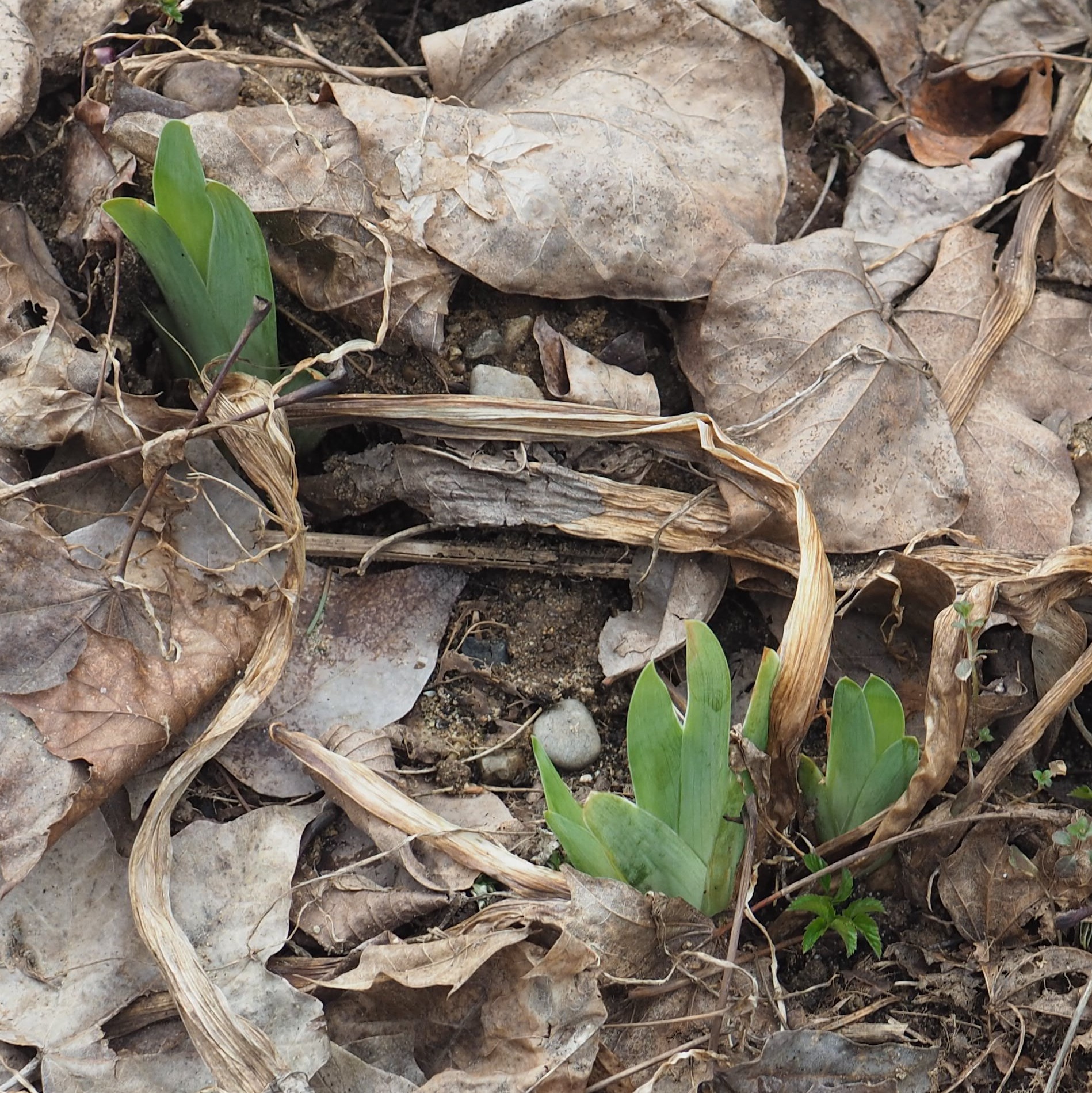
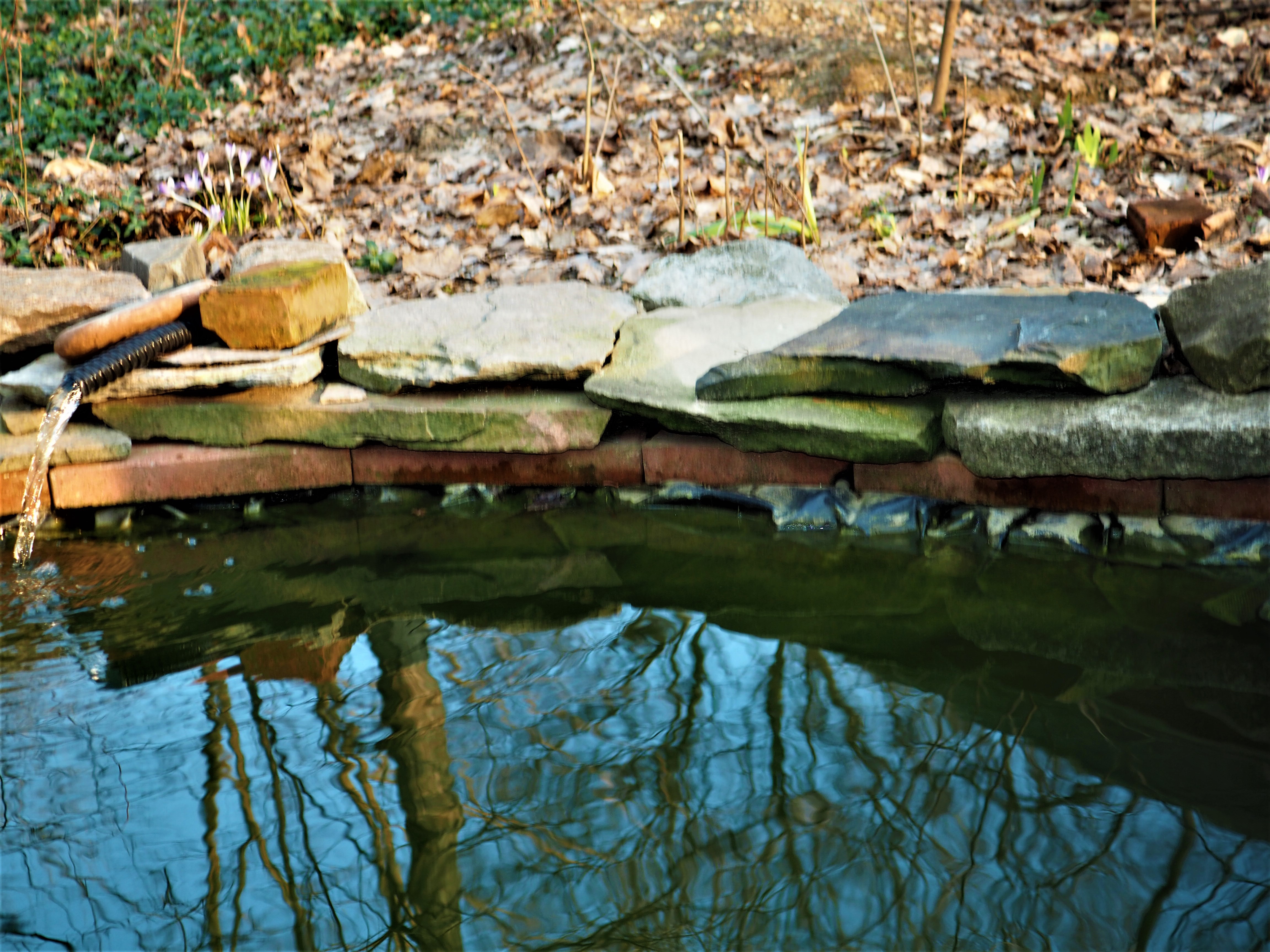
Here are the Snowdrops again. And the Squills coming closer to blooming. Tulips are starting to look more robust too.
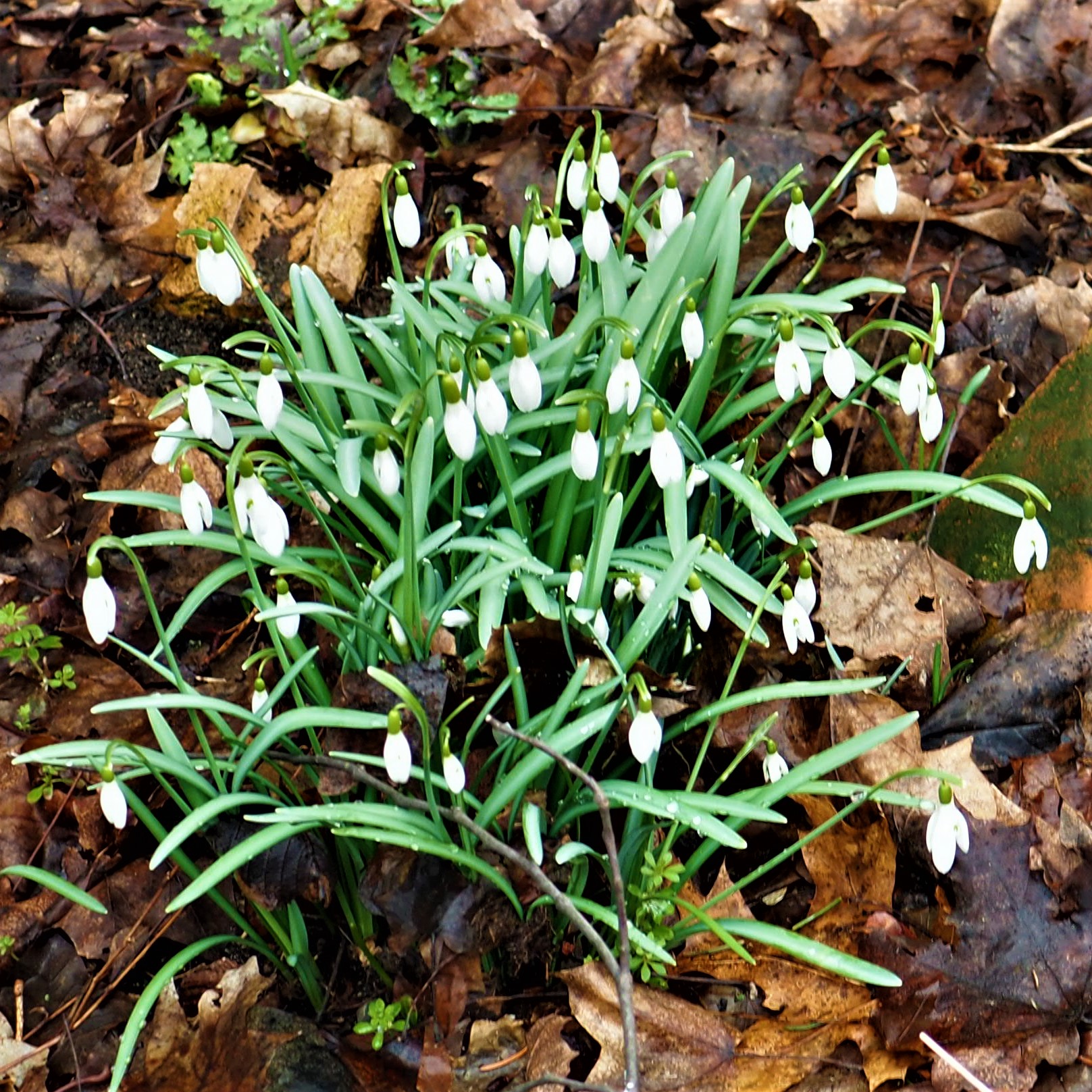
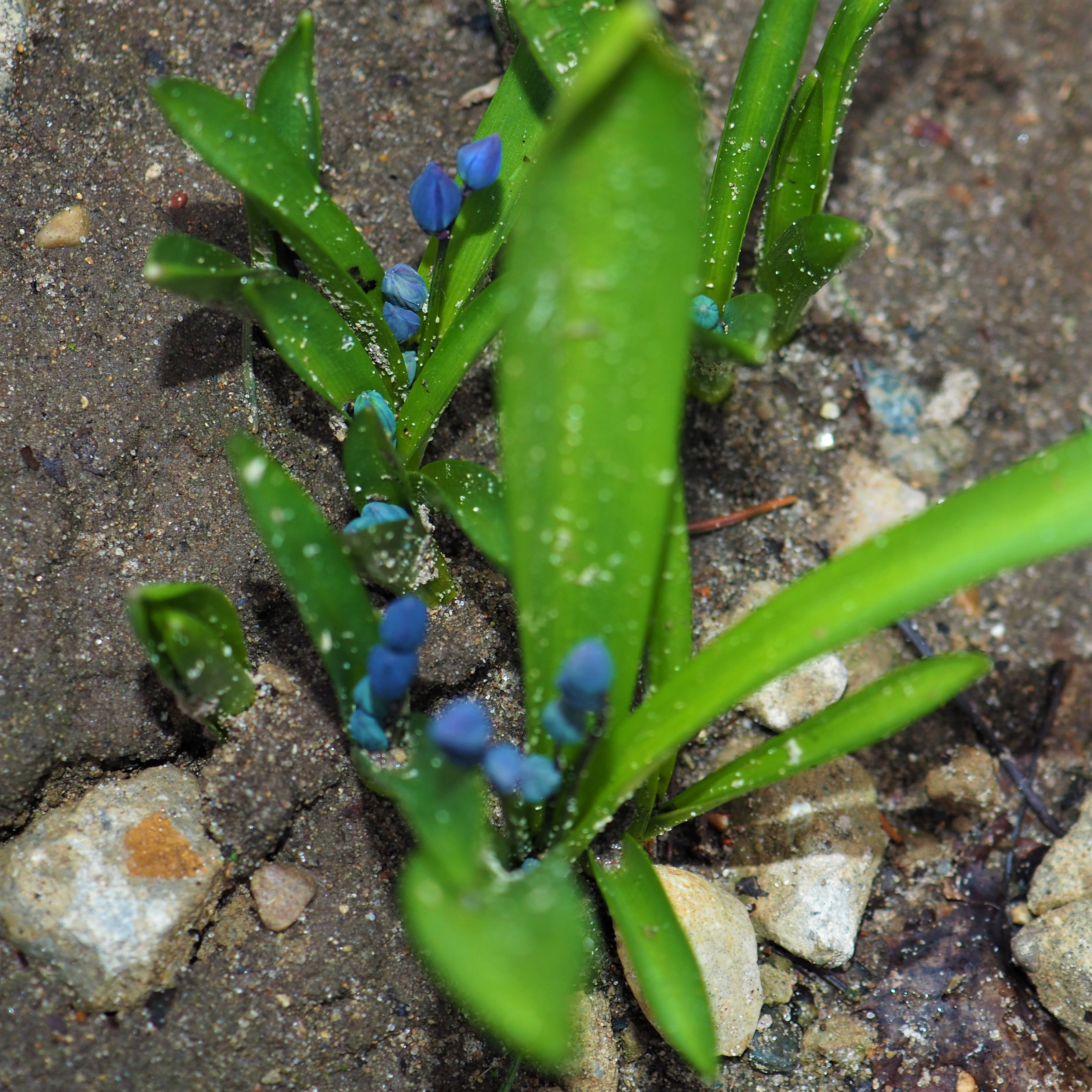
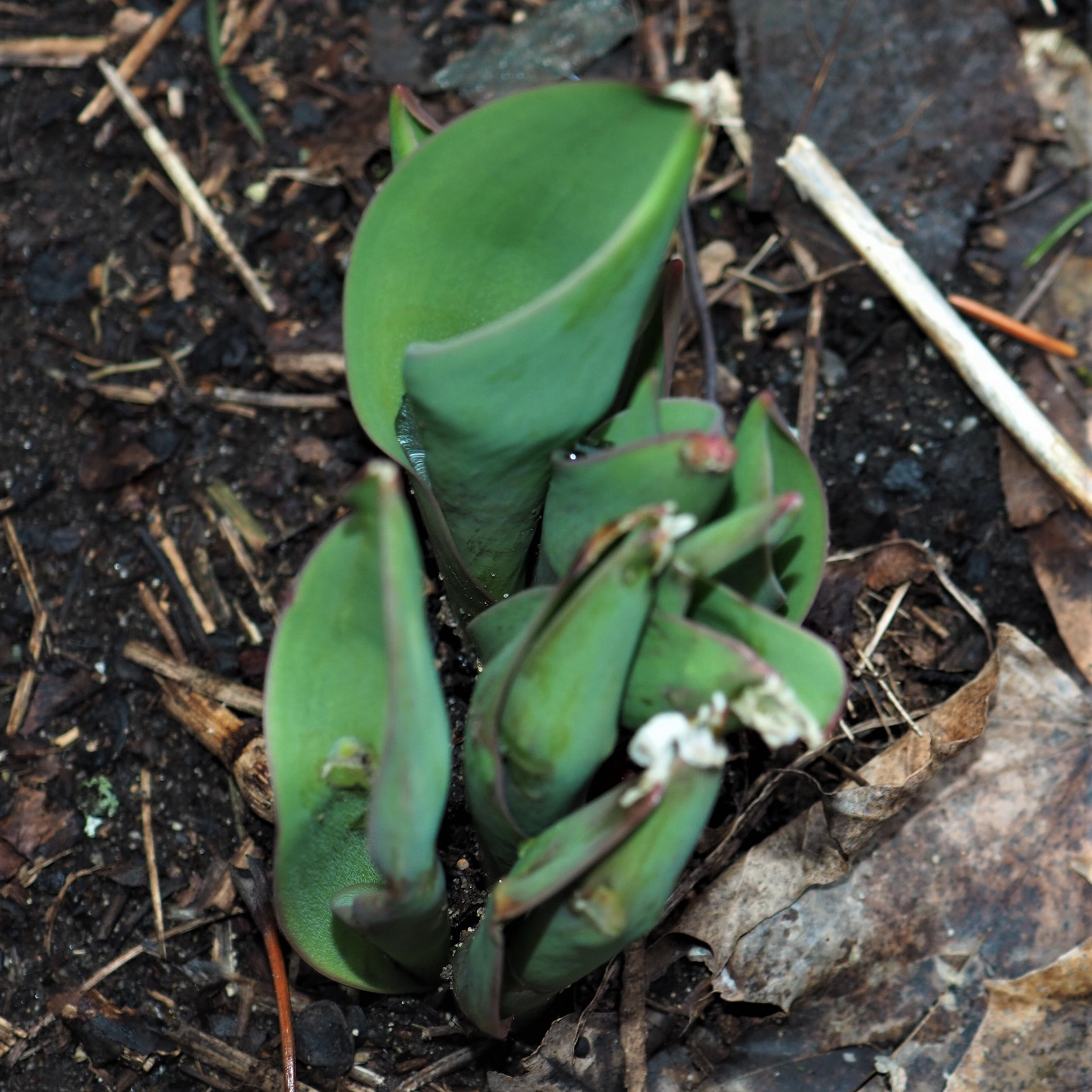
A couple more outliers: It is Early Spring, and one of the creatures we expect to see are some of the Springtails - six-legged creatures that are NOT insects. This one is in Subfamily Tomocerinae, Order Entomobryomorpha, and is a member of the Elongate Springtails. The next Springtail (pictures 2 and 3) may or may not also belong to this group.
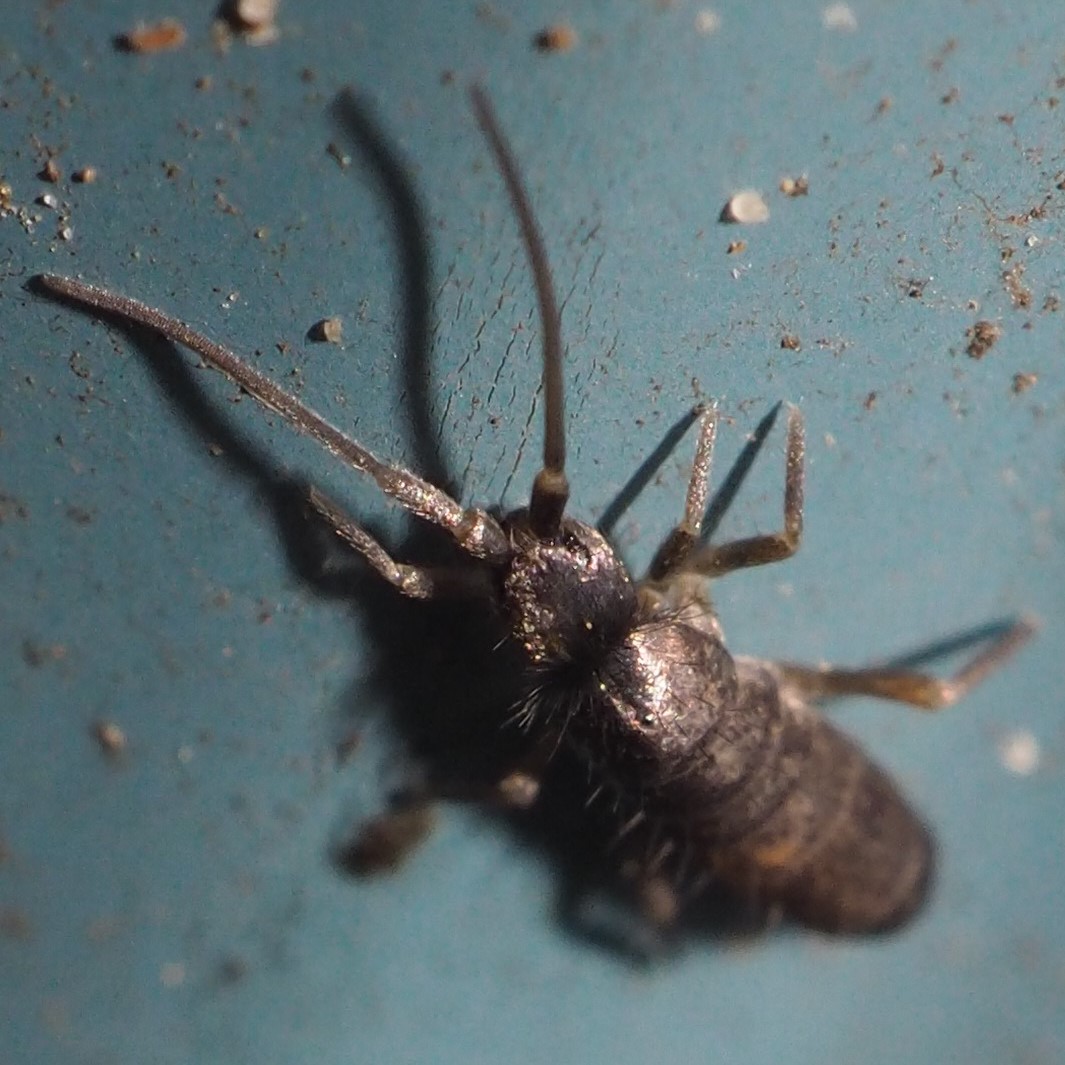
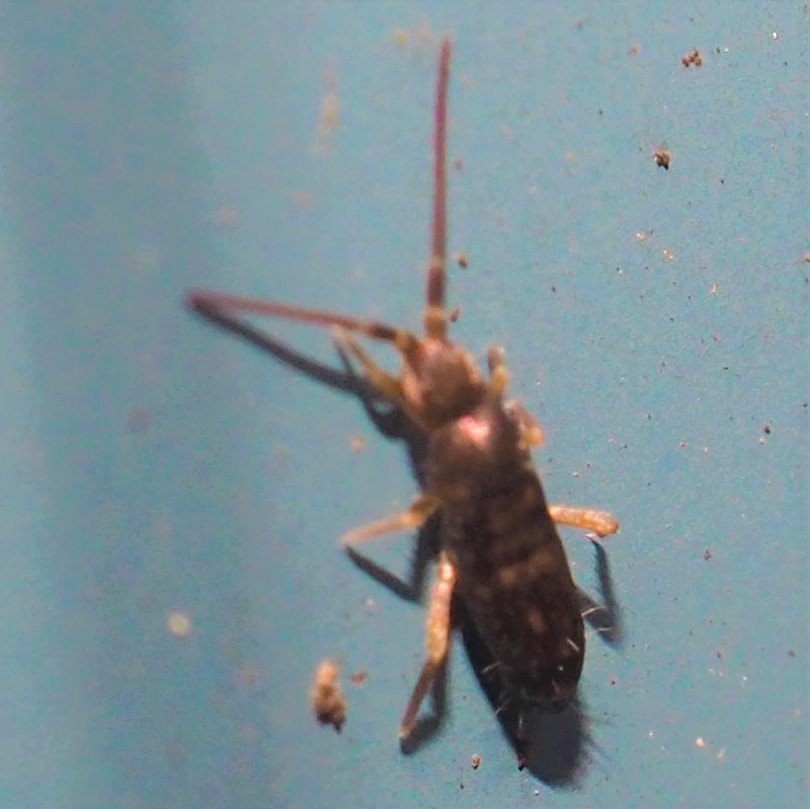

Now to the Spiders. First, a Common House Spider; a Mystery Spider; and a little Red Spider with its prey? or more legs than I've ever seen on a spider. It is also the same shape as the Common House Spider.
.jpg)
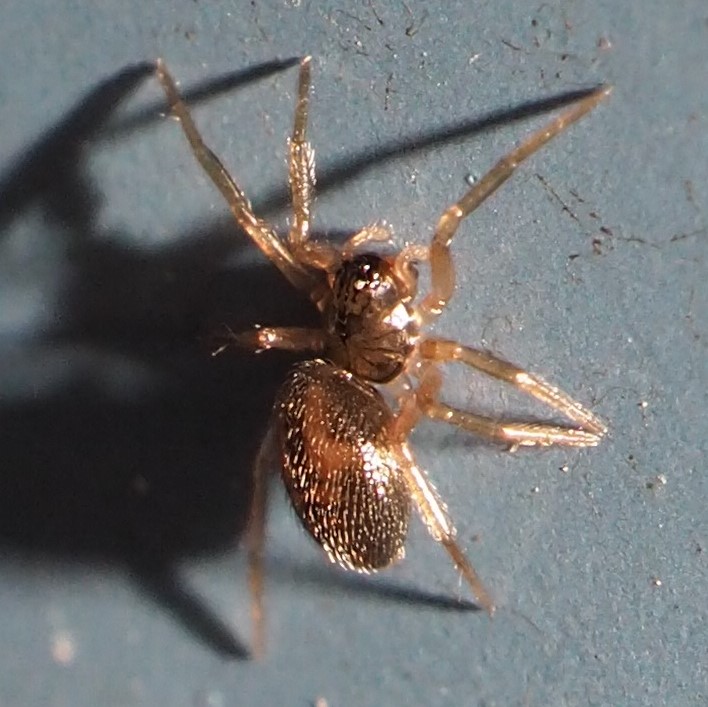
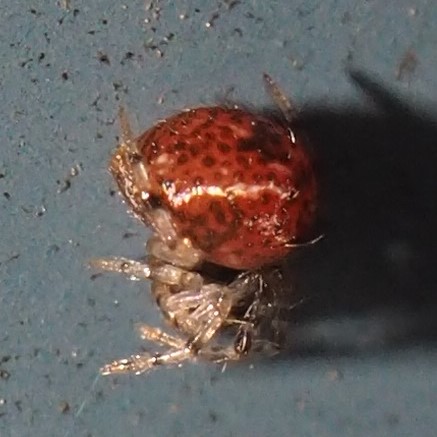
This Mystery Spider seems to have bagged a big Pillbug or the like. The second (and third)is a Colourful Comb-footed Spider, Genus Parasteatoda (the same genus as the Common House Spider).


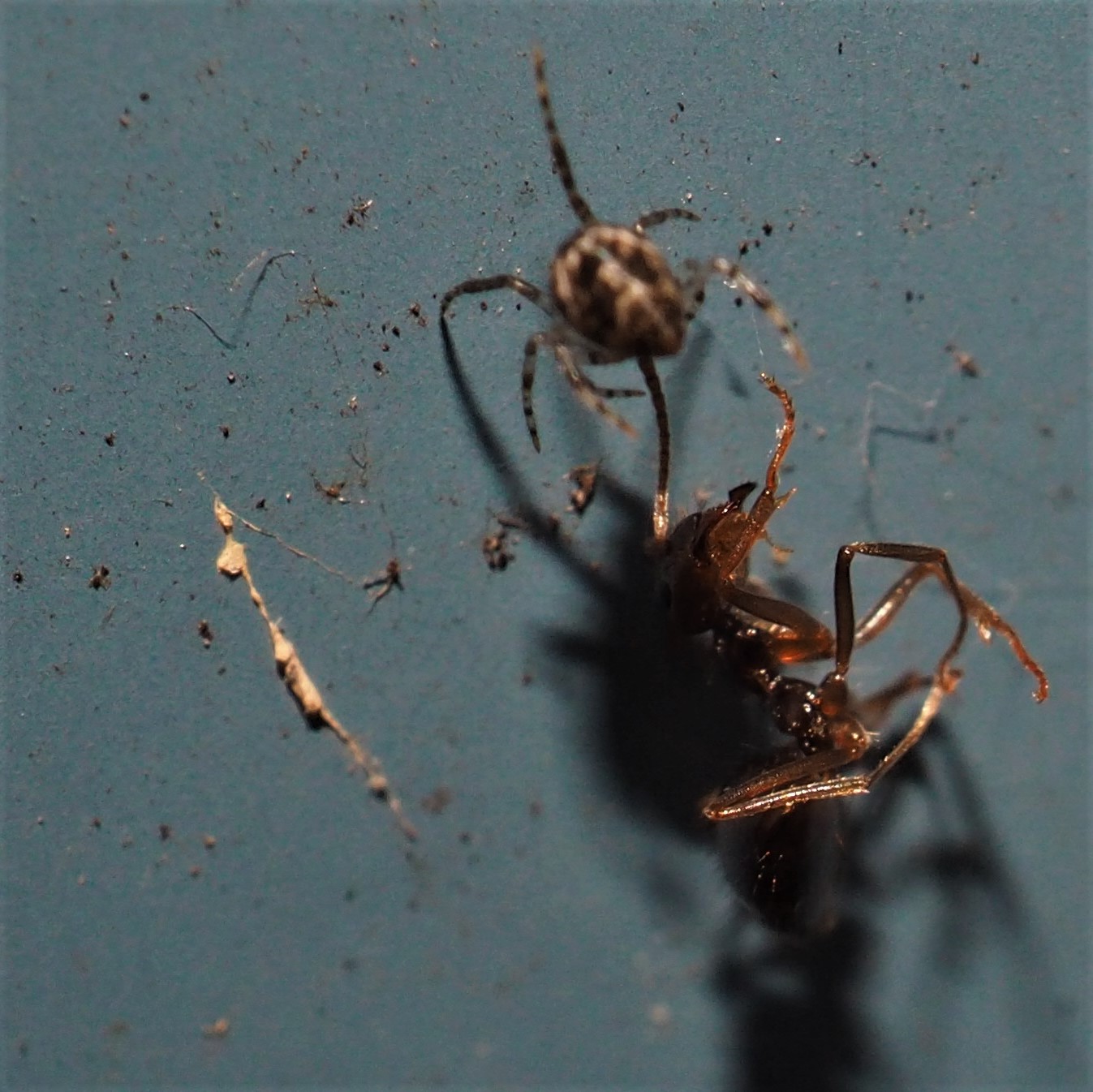
Here are a couple of tiny Dwarf Spiders (Linyphiids). You may wonder what the third thing is: well, it's a Spider too, one that is capable of twisting itself into something with carefully hidden legs, something often called a Thread-legged Spider, which used to be called a Cribellate Spider.
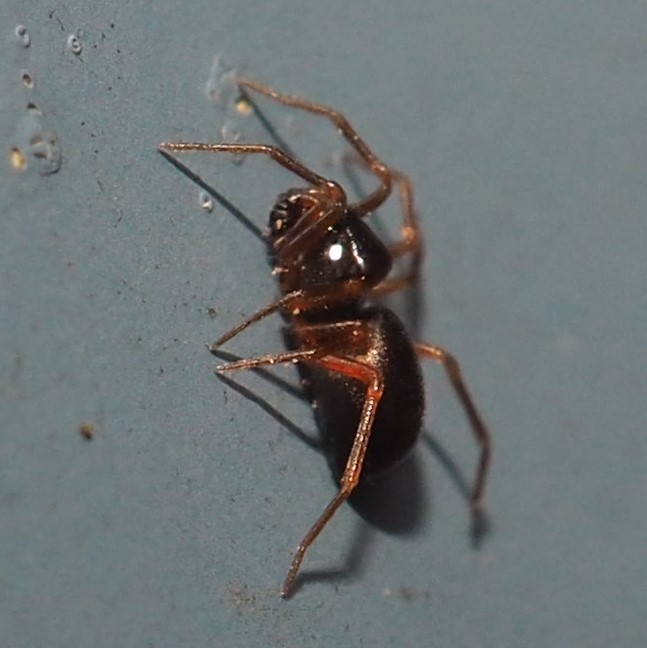
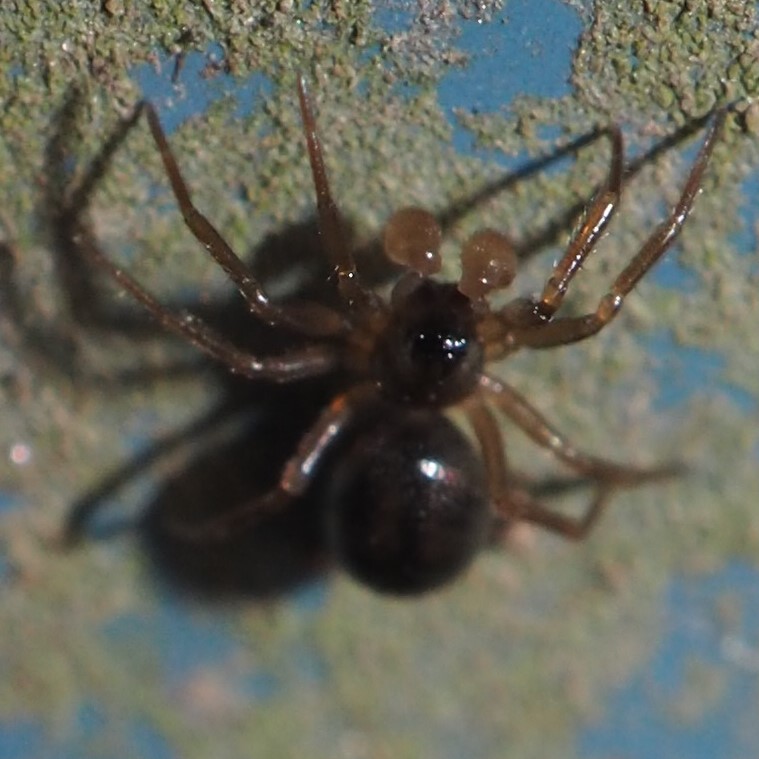
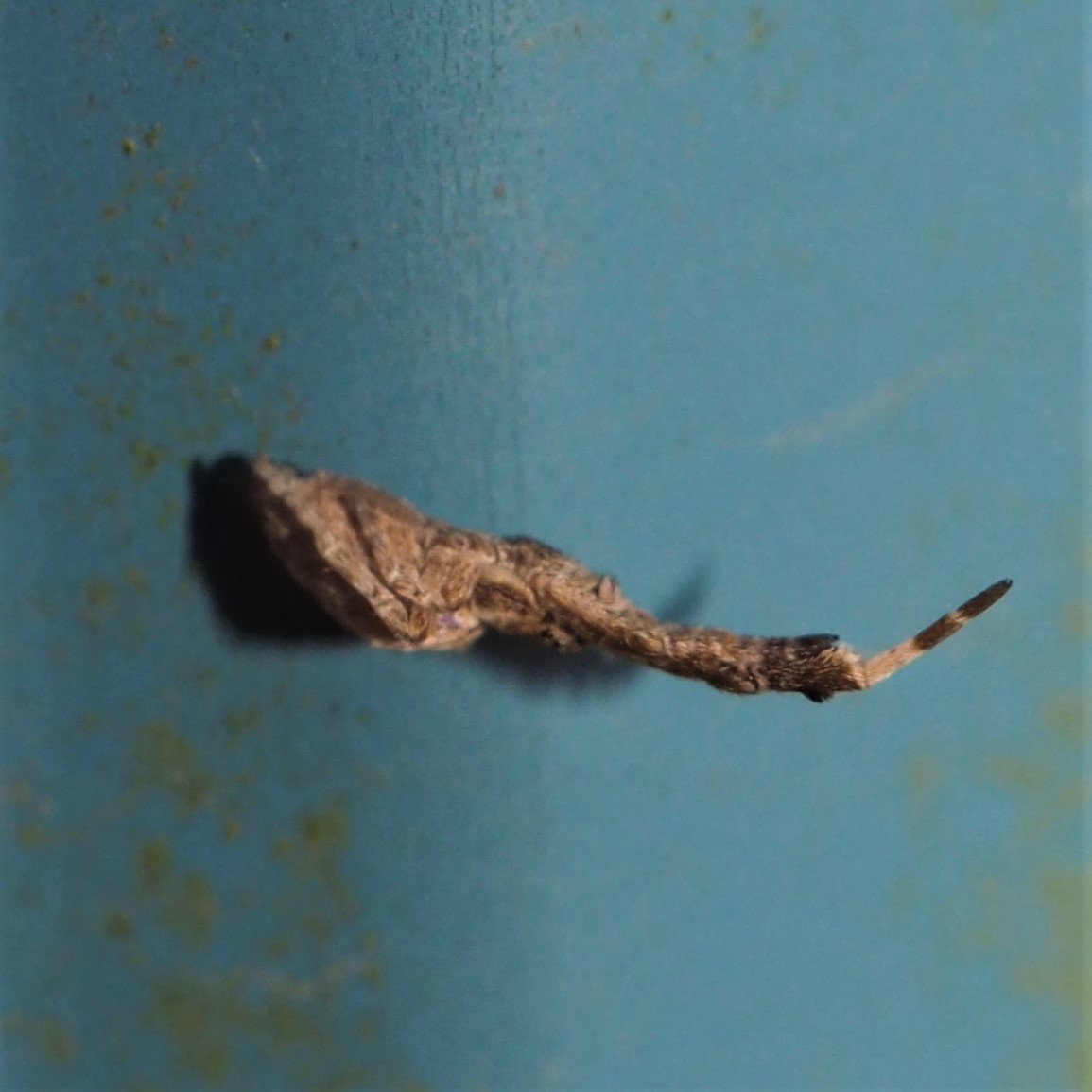
There is one big part of our biosphere that I talk about too seldom - Mammals. All of us. And some of the Mammals we share our life space with. I never think of pointing my camera at that furry playful creature that is right now running around to see if it can find the Walnuts it buried last fall - our Eastern Grey Squirrel! The third picture will be familiar to all who live in Albion - it's our famous Albion Black Squirrel. Actually it is black and also an Eastern Grey Squirrel. They come in many patterns - black, red, white tails, and most of their other parts. We owe our many pesky Walnut saplings to the nuts whose hiding places the Squirrels forget.
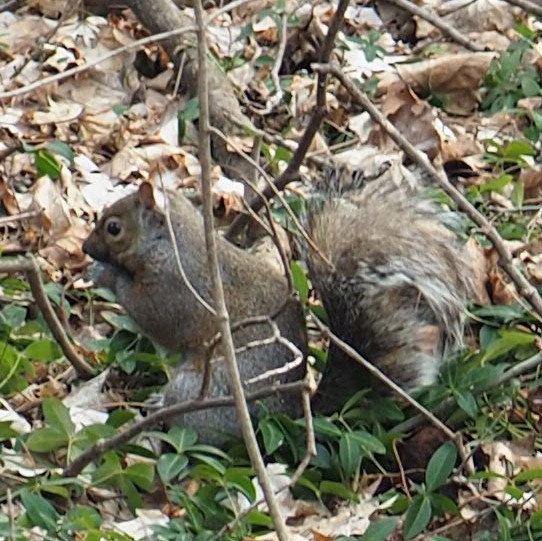


Another kind of Mammal to be found in some large part of human habitations here is good old Felis catus. (I guess the Romans had two words for "cat".) They come in all kinds of color combos, although I haven't ever seen a live Cat with any Green. Even the Blues, like the Russian, aren't blue enough for a blue lover like me. But we have a smashing Black Cat, Spooky, who has weathered her nasty gut problems. Thank goodness our resident Animal Whisperer, Chaim, has been able to get her medicine down her throat by mixing it with milk. She has now gained back (I think) almost every ounce she had lost just a few weeks ago. Although it hasn't been exactly as hot as she prefers outdoors, she still loves to lie on her rug in the sun when there is any to be had. In picture 3, I believe she thinks there is some food inside that house.
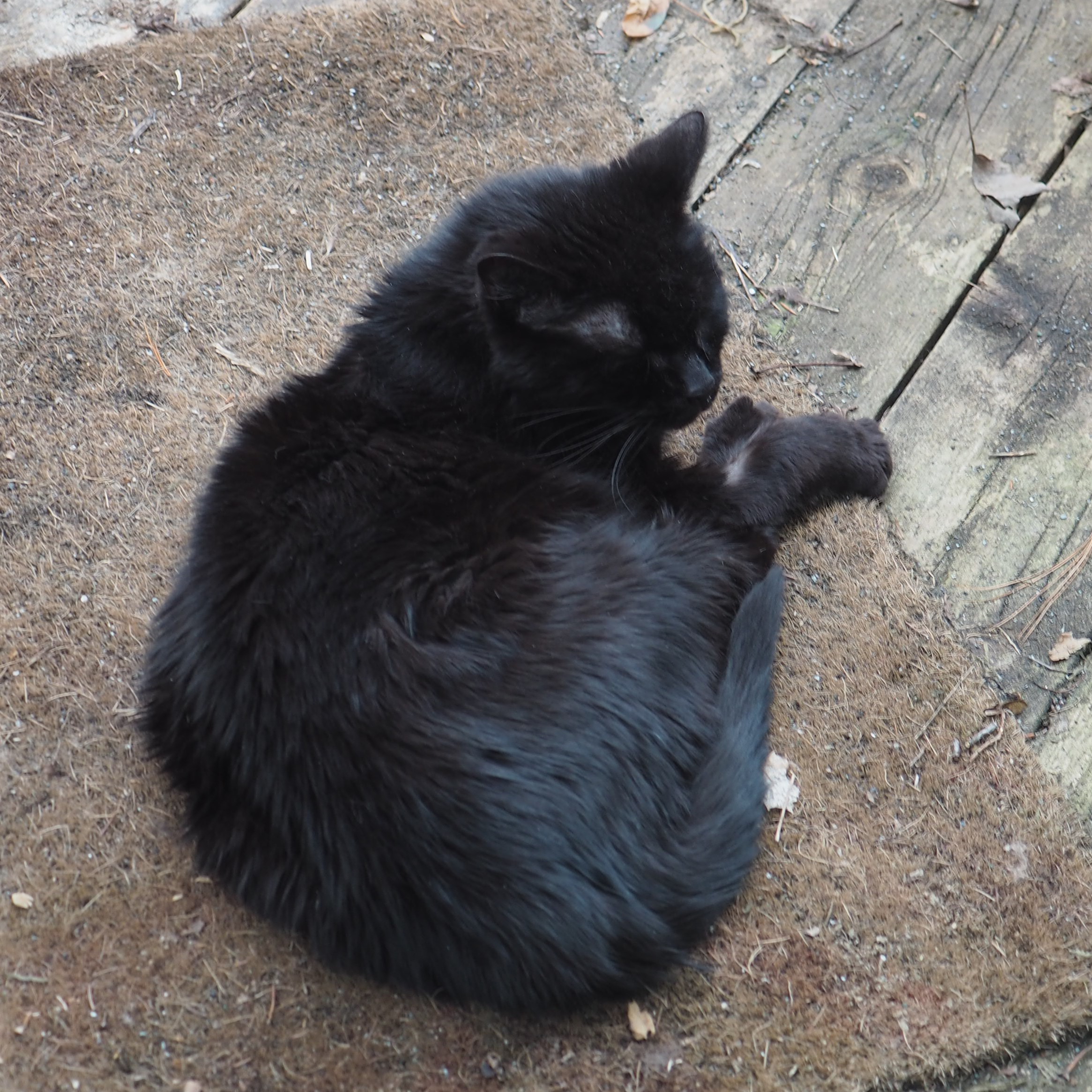
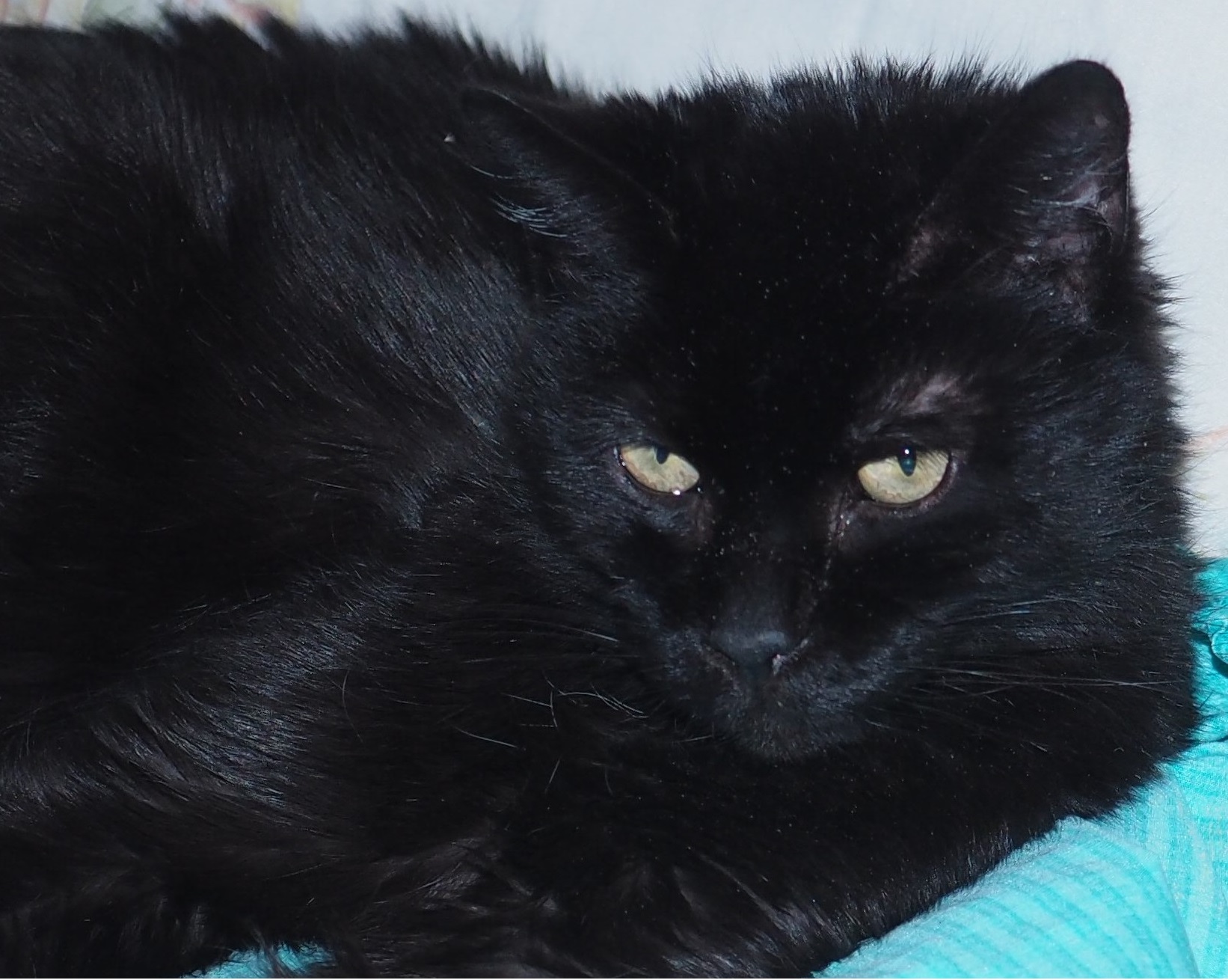
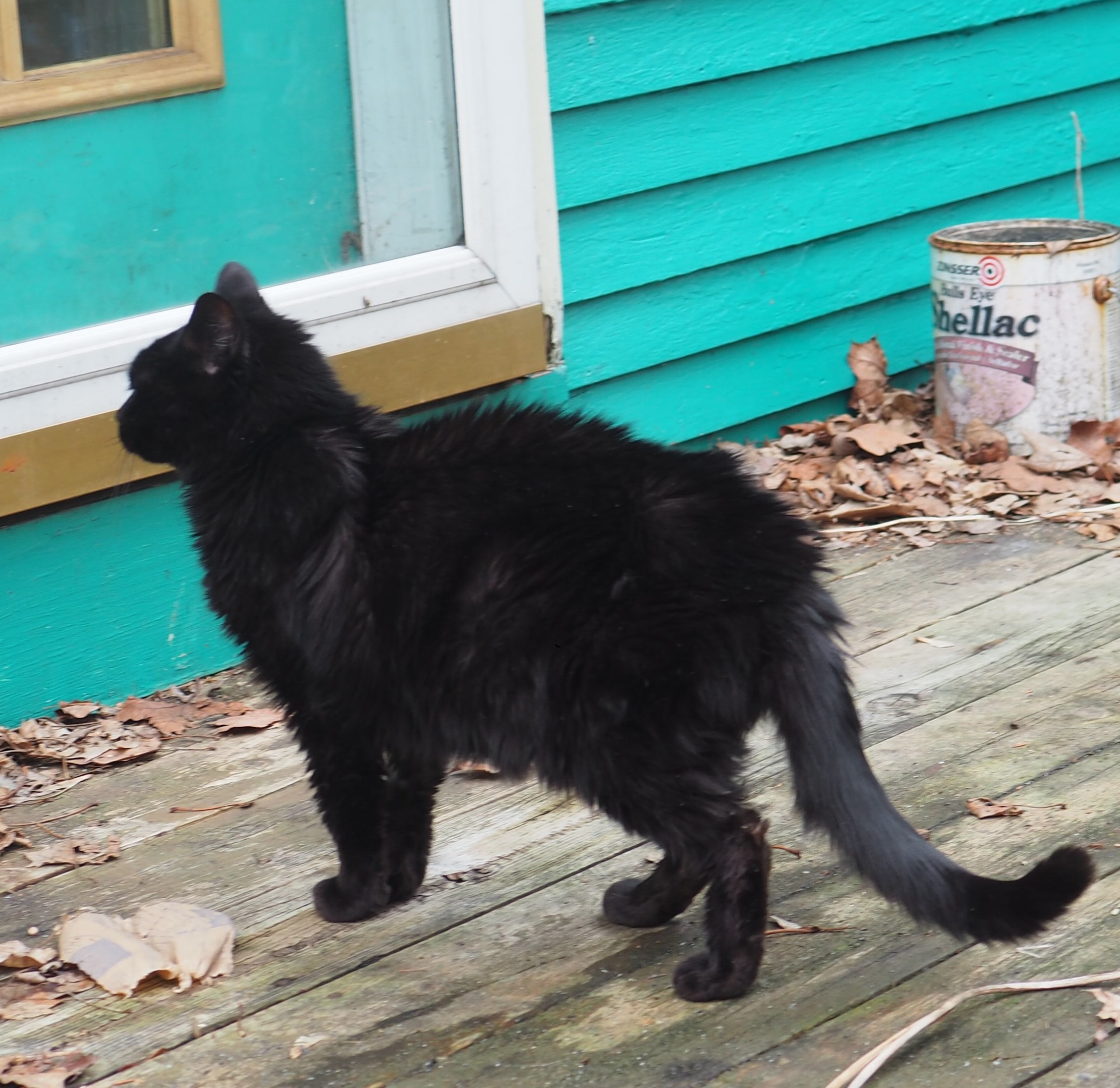
The other Cat person who lives with us is Tripper, a lovely white and orange kitty. She has one problem and that is Spooky. Especially lately, while we have been so solicitous about Spooky's health. What a jealous look that is. Oh, no, and only two pictures of ME!
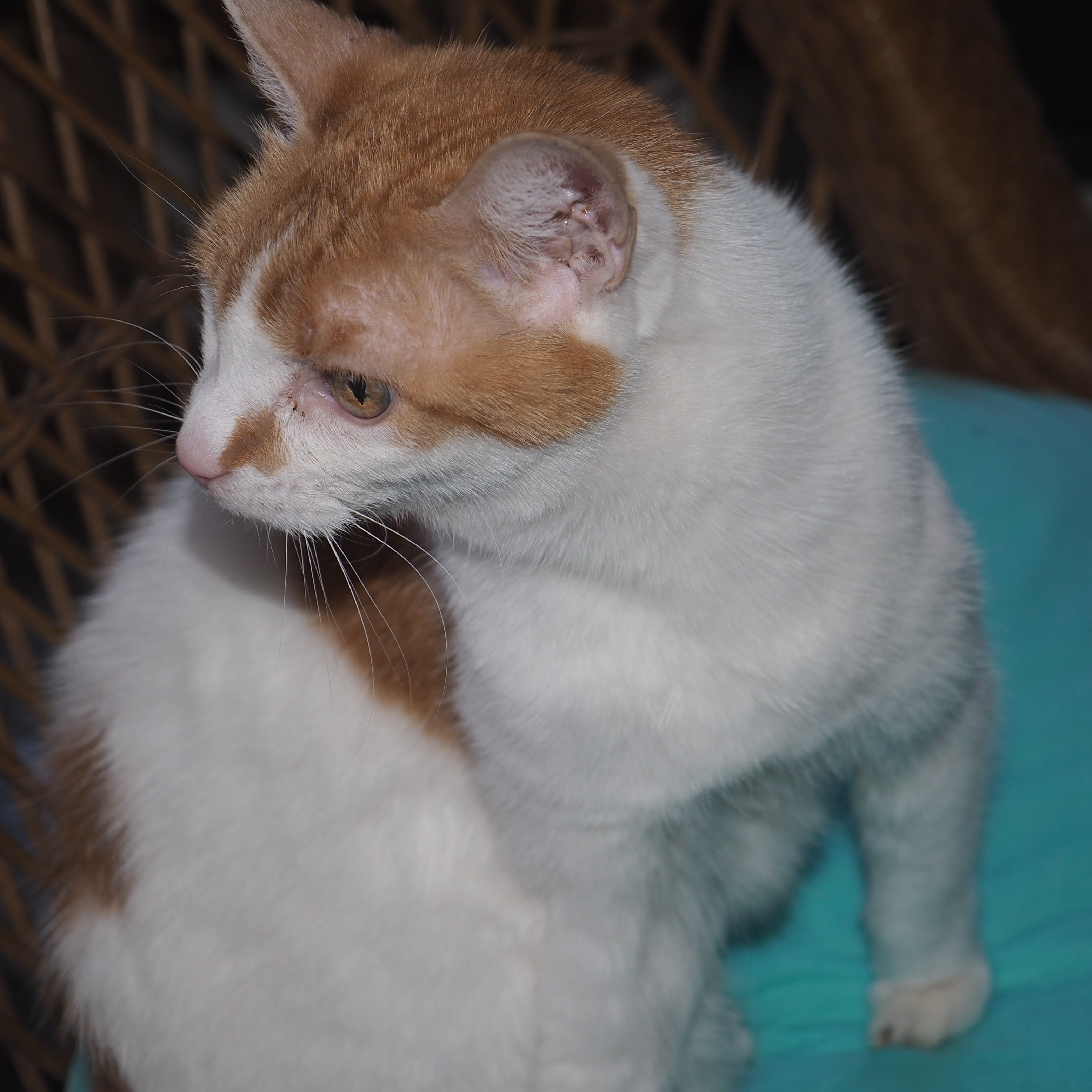
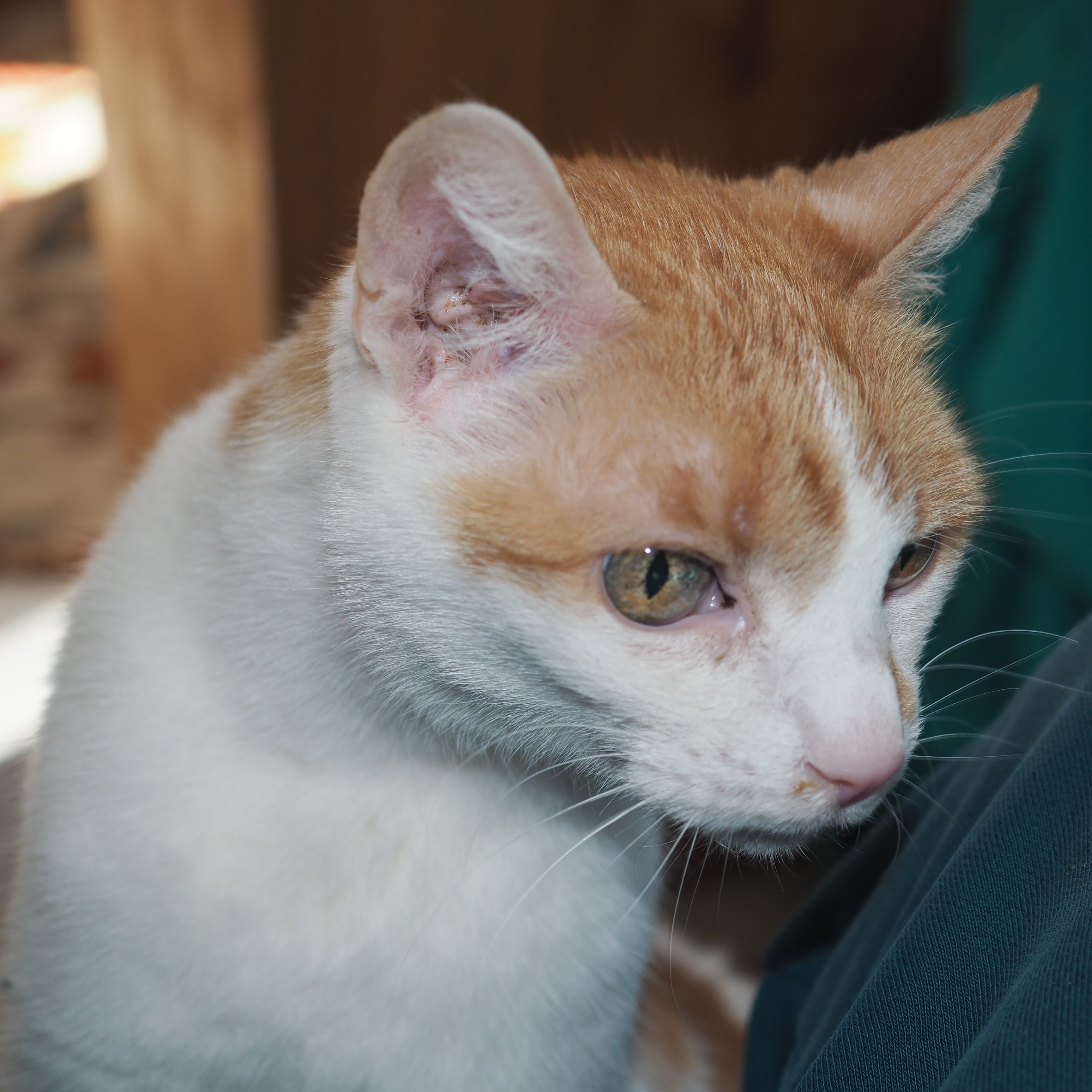
I hope Cousin Renee liked that family tell-all. Now let's see if we got enough Fishy pictures despite the lack of sun the past week. I did break down and give them a bit of food last Sunday when the pond temp came up to 55F. I've been staying very quiet since then, hoping the temperature will come back up - I get my best photos of the little guys when I can sing them up to the top. Well, anyway. Here is a picture of the family last week.
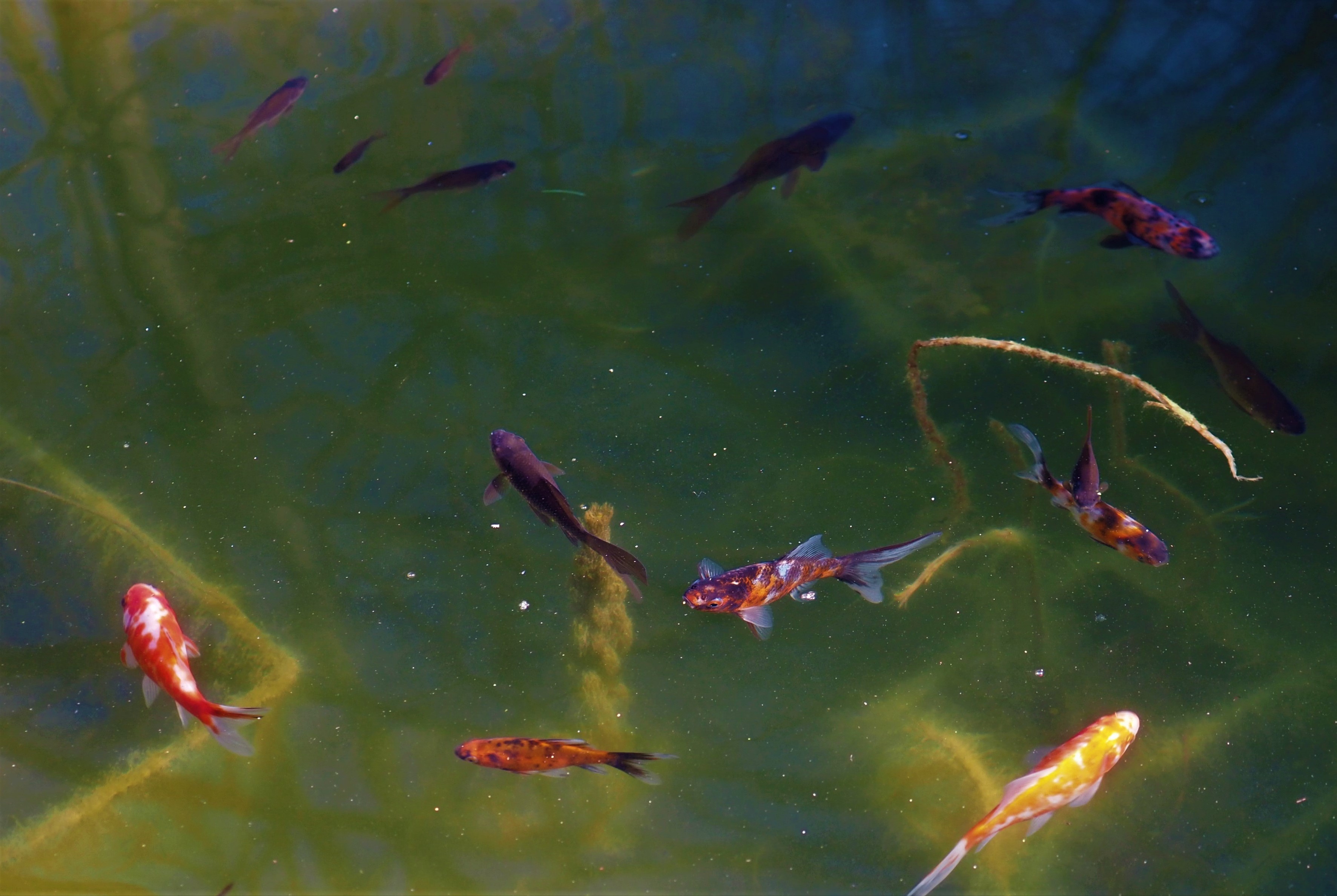
One of the prettiest fish I've ever seen (in this pond) is Pebbles. He was brownish when he first showed up, meaning he had a good amount of the inbred genes. But we kept an eye on him because he seemed to have some fleeting colors. As last summer went on, his colorful genes began to take precedence and now he is a Miro of a fish. Picture 1 shows him enlarged - I know you all want one just like them but this is one of a fish kind! Picture 2 shows another of last summer's color winners - this one is the one formerly and still known as Stripes! He's the one giving a ride to the little other fish!

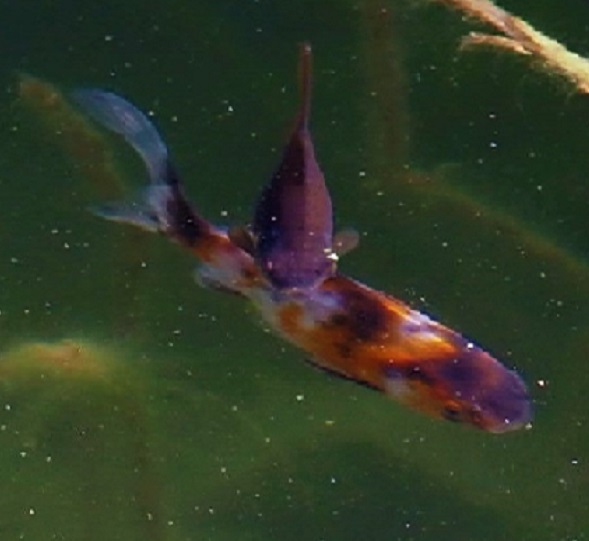
So we are waiting for the water temperature to rise to about 55 F before daring to sing the foodies song again. I hope you have something better to do with your imagination!
Oh - for you abstract picture connoisseurs, I had this strange picture that I couldn't get anyone on iNat to say was a vintage image of some rare creature. Since nobody would try that, I made a few color-morphs of it. I think sometimes we need to use our imaginations and say, Now, THAT is a a rare Scurmudgeonfly. Personally I might have named it a Seussfly. Please enjoy! If you would like to share your idea of what it is, please just email me!
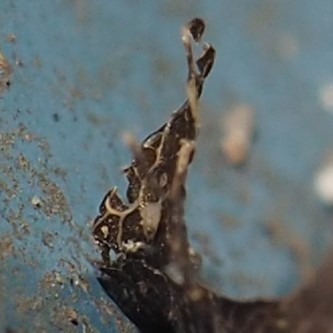
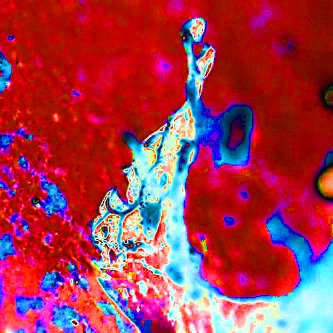
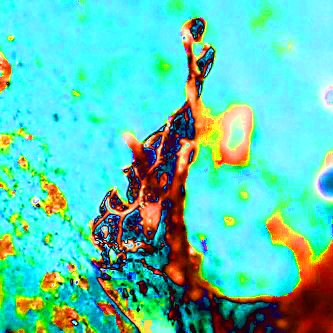
Love, Martha
Back to March 20, 2022
Forward to April 3, 2022
Back to main menu
copyright Martha O'Kennon 2022
















































.jpg)





















